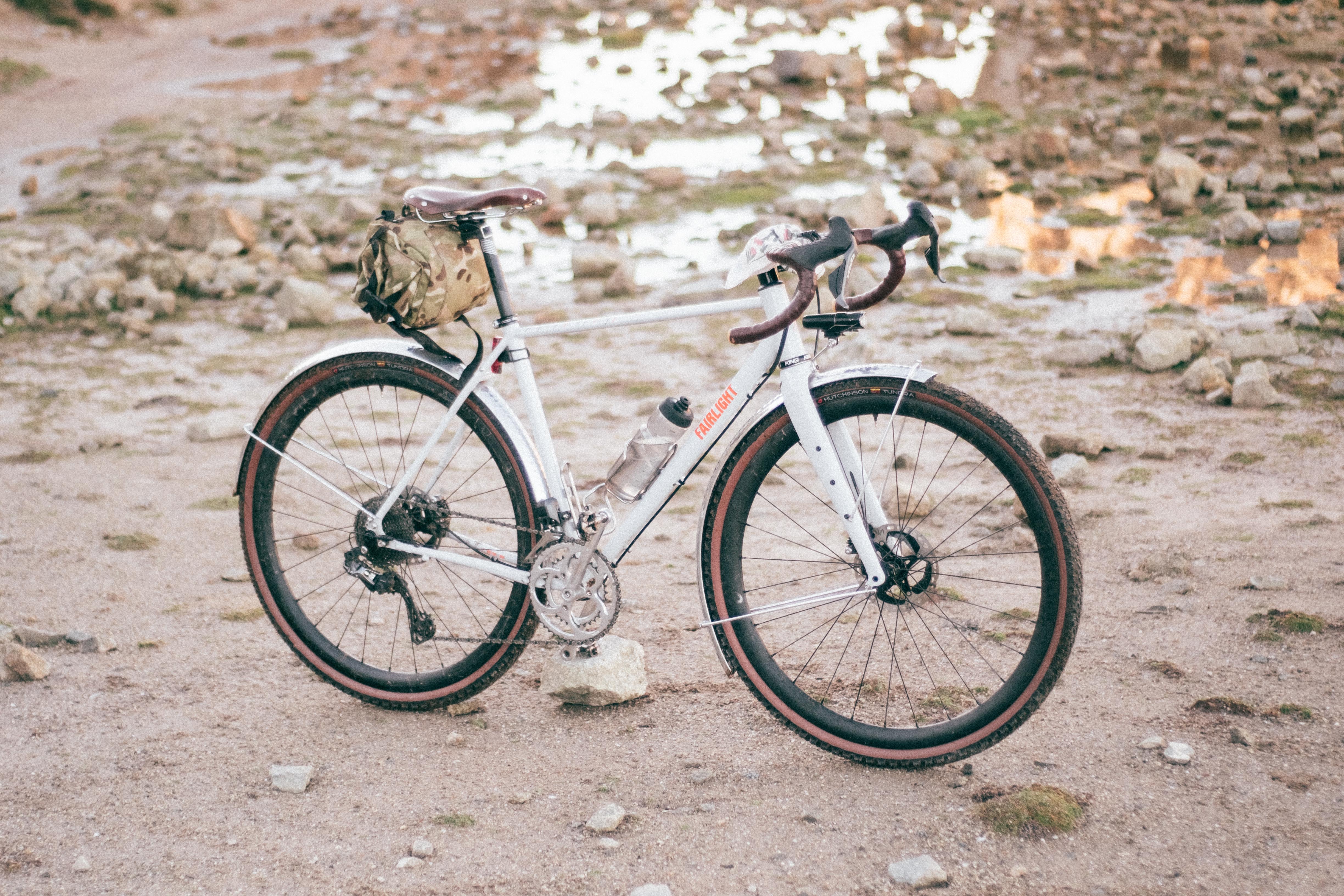Cyclingnews Verdict
Practically perfect, unendingly versatile, great to ride, easy to live with, and brilliant value.
Pros
- +
Jack-of-all-trades versatility
- +
Can mix it on road with the best road bikes
- +
Well thought out details
- +
Beautiful
Cons
- -
Maybe a little heavy, but that's it
You can trust Cyclingnews
In March of 2022, I got in touch with Dom from Fairlight, and he hooked me up with a Secan 2.5 to use as a long-term test bike. My initial review after about six months was the first five-star rating I gave to a bike. Interestingly, the only other bike I have given that score to was the Fairlight Strael, the brand's road offering.
What follows is a much more in-depth look at the Secan. I’ve had it for over 18 months at this point, and it’s been used as a test bed for a great variety of different products. It also came out as the 'best for bikepacking' in our Cyclingnews Awards, and well and truly sits as one of the best gravel bikes on the market. Within this constant churn of setups, there have been a few distinct flavours, and of these, there is one setup where I think the bike shines the best. Any bike I have for a long time undergoes a metamorphosis, culminating in what I think of as the bike's natural, final form. For some bikes it’s easy; my Bowman Palace just needed some better wheels, classic drop bars, and Thomson finishing kit to become the most noodly, uncomfortable old-school crit bike I could think of. Here though, with a platform that is quite so versatile, it takes a little longer.
The good news for anyone considering purchasing one is that my overall score for the bike remains unchanged, and has gone up a hair. I still maintain that it’s a five-star machine, and taken in the round it’s still the best gravel bike I’ve tested. If you’ve already bought one, perhaps having read my initial review, then this may serve to help you get the most out of yours.
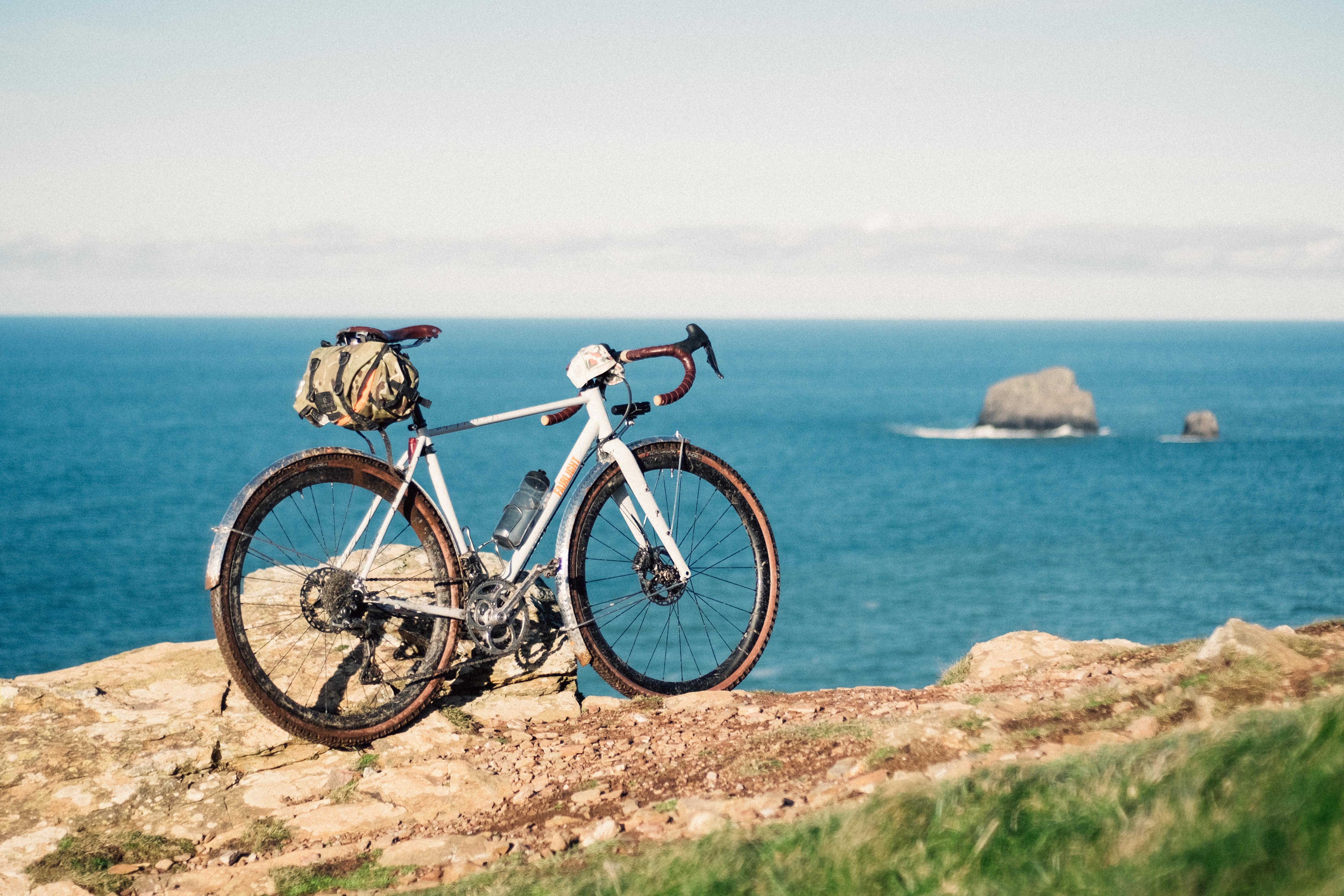
Design and aesthetics
Steel bikes have had something of a resurgence in the last few years as riders move back towards what was for many years thought of as an outdated material. Rather than heavy, cumbersome beasts, modern performance steel bikes can mix it with aluminium and carbon, while offering different qualities, and a certain aesthetic that, if we’re all being honest with ourselves, is as important as any performance advantages.
The Fairlight Secan is a very good-looking bike. Skinny tubed road bikes look cool, but there aren't enough points of difference for many to stand out from the crowd without expensive custom paint. A skinny tubed gravel bike, though? Visually that’s something a little different. In the case of the Secan the eye is immediately drawn to that top tube; diminutive, ovalised along the horizontal axis, with subtle graphics near the seat tube. It looks wonderfully fragile, and along with the thin, wavy stays gives a classic look to proceedings. Add in some thicker tubing for the downtube and headtube, and a thickly bladed carbon fork and you get a frameset that’s a joy to behold, especially when paired with some very large tyres and in the off-white 'putty' option you can see here.
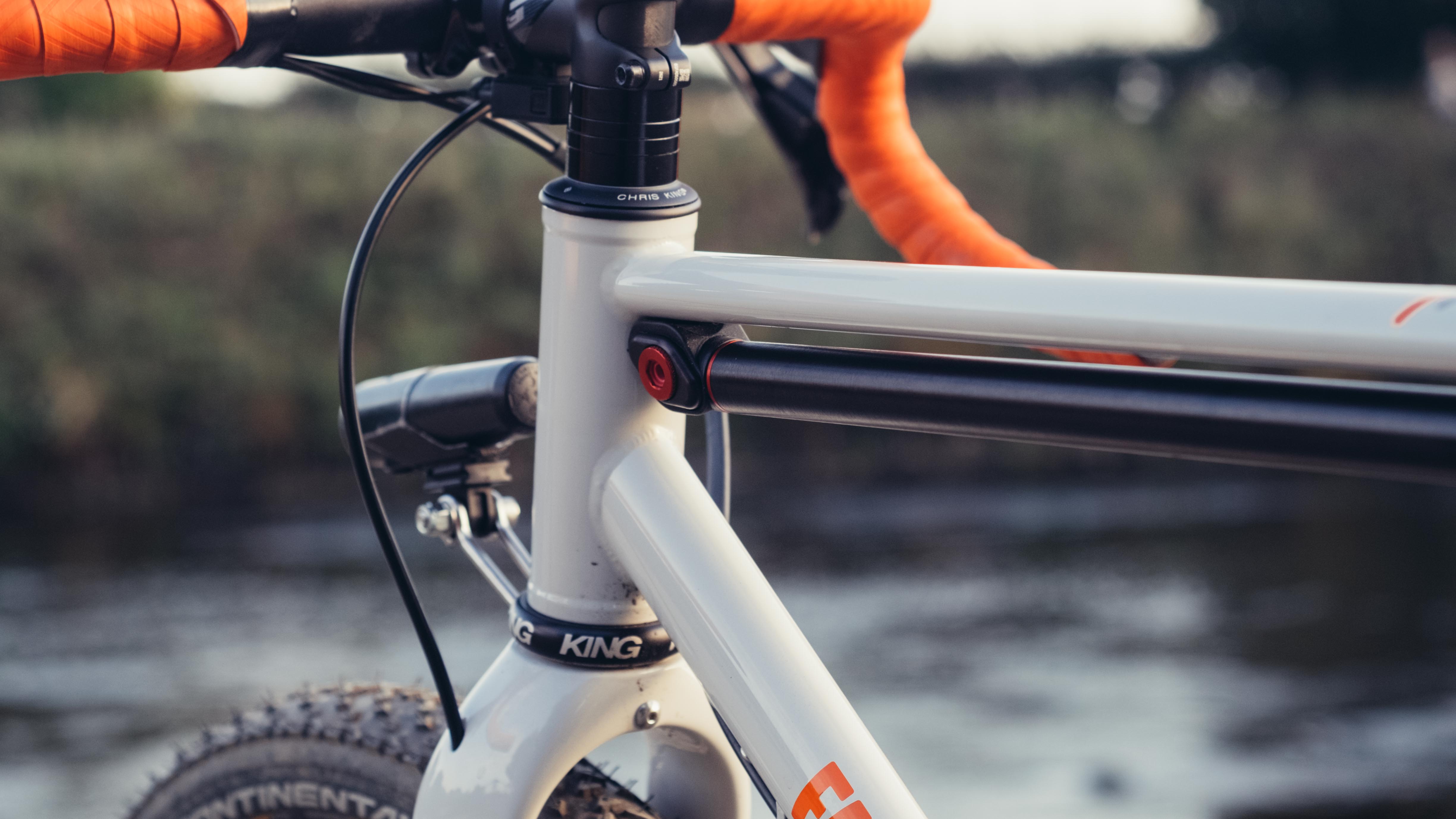
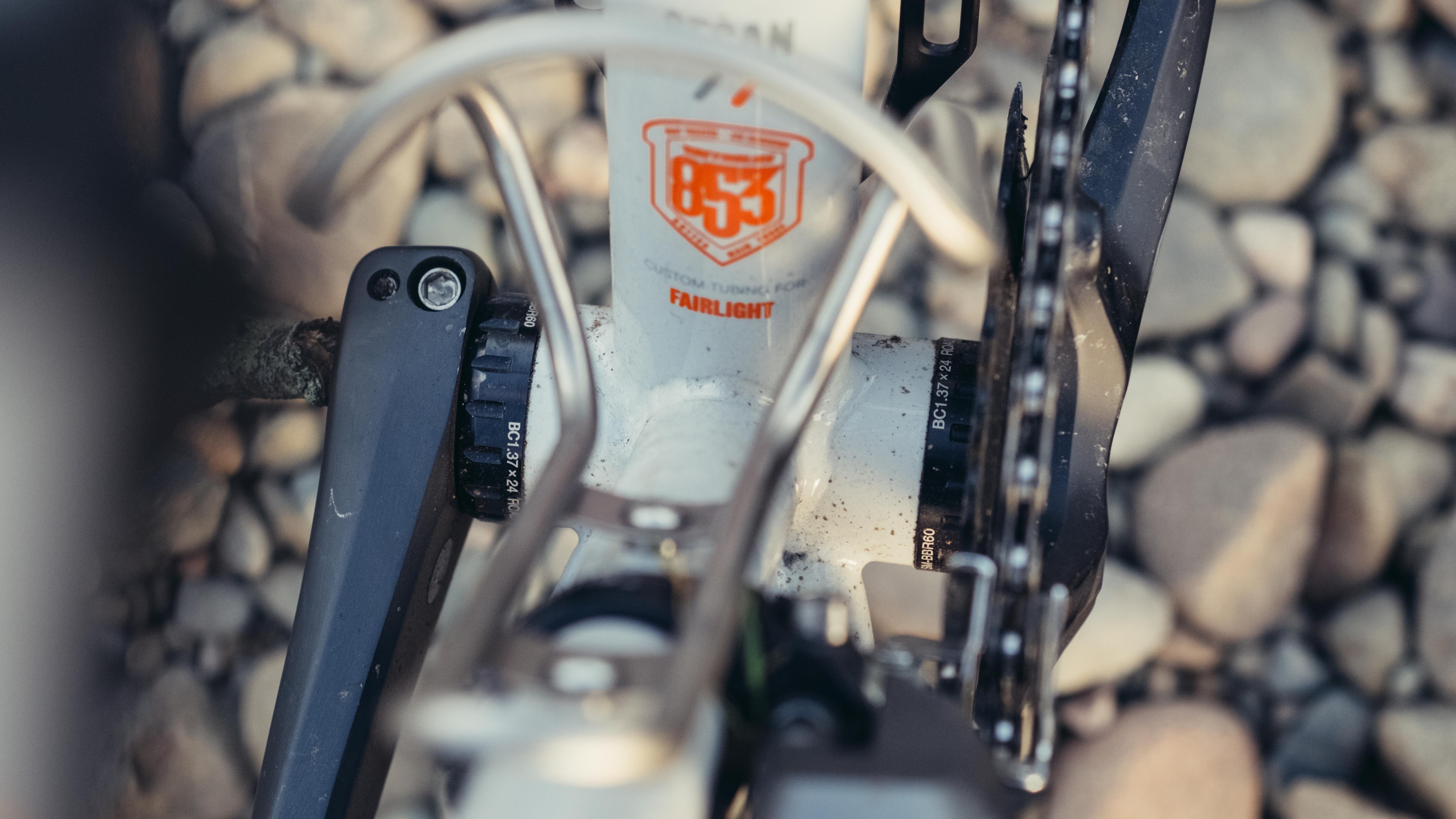
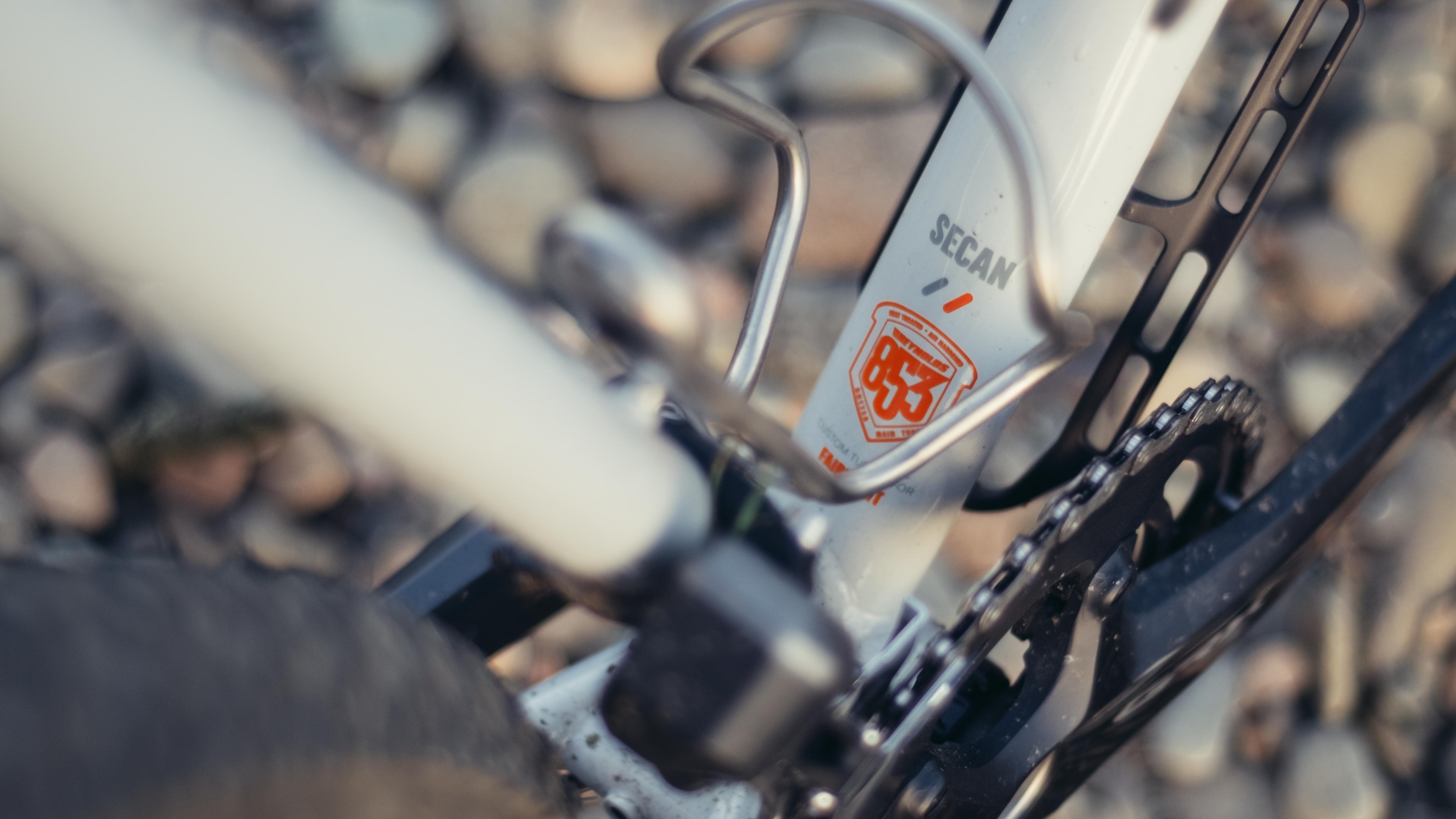
While the paint is lovely, with understated graphics and logos that pop in the bright orange, there are many many well-considered details in the frameset. Primarily, in this case, it comes down to tubing.
Many steel bikes, including top-of-the-range bespoke bikes, use off-the-shelf tube sets, meaning that to some extent the build is constrained. Fairlight is big enough to warrant a custom tube set from Reynolds, whilst being small enough to offer something closer to a bespoke build service Not only are there ten sizes available, in both normal and tall options, but Fairlight will also match a bike fit for you free of charge to make sure you pick the right option. I myself have ridden a size 56R bike.
I’ll not go into the tubing details in such great depth as to scare you off, but the frame is constructed from heat-treated Reynolds 853 steel. The heat treating essentially makes the steel stronger for a given wall thickness, but the same can be said of any 853 frameset. The important thing to know is that 853 is the poshest non-stainless steel tubing that Reynolds produces. The rear stays, it’s worth noting, are 4130 cromoly steel, which I’m assuming is down to the fact that they are custom-shaped to quite such a degree. Rear triangles often differ in composition from the main tubes, and this isn’t any cause for concern. My own custom frame has Columbus Zona main tubes, but then uses Dedacciai stays originally intended for fat bikes to improve the tyre clearance.
In the case of the Secan the downtube is ovalised at the bottom bracket in a horizontal direction to add additional lateral stiffness where it joins the BSA shell (an unsurprising but very sensible choice of B.B.), and similarly ovalised at the headtube but in a perpendicular direction to resist braking forces and bumping at the headtube. Given the headtube is an area of more stress than most other places on a bike frame the headtube end of the downtube has an extra butt at the end, adding a little extra thickness internally at the weld area.
The top tube is ovalised over its entire length in the horizontal plane to resist lateral forces and conversely add in some compliance along the long axis of the frame. The stays too, custom formed, are pleasantly wavy which, as well as being lovely to look at, allows clearance for a 50mm tyre on a 700c wheel, or a truly monstrous 2.4” tyre on a 650b rim.
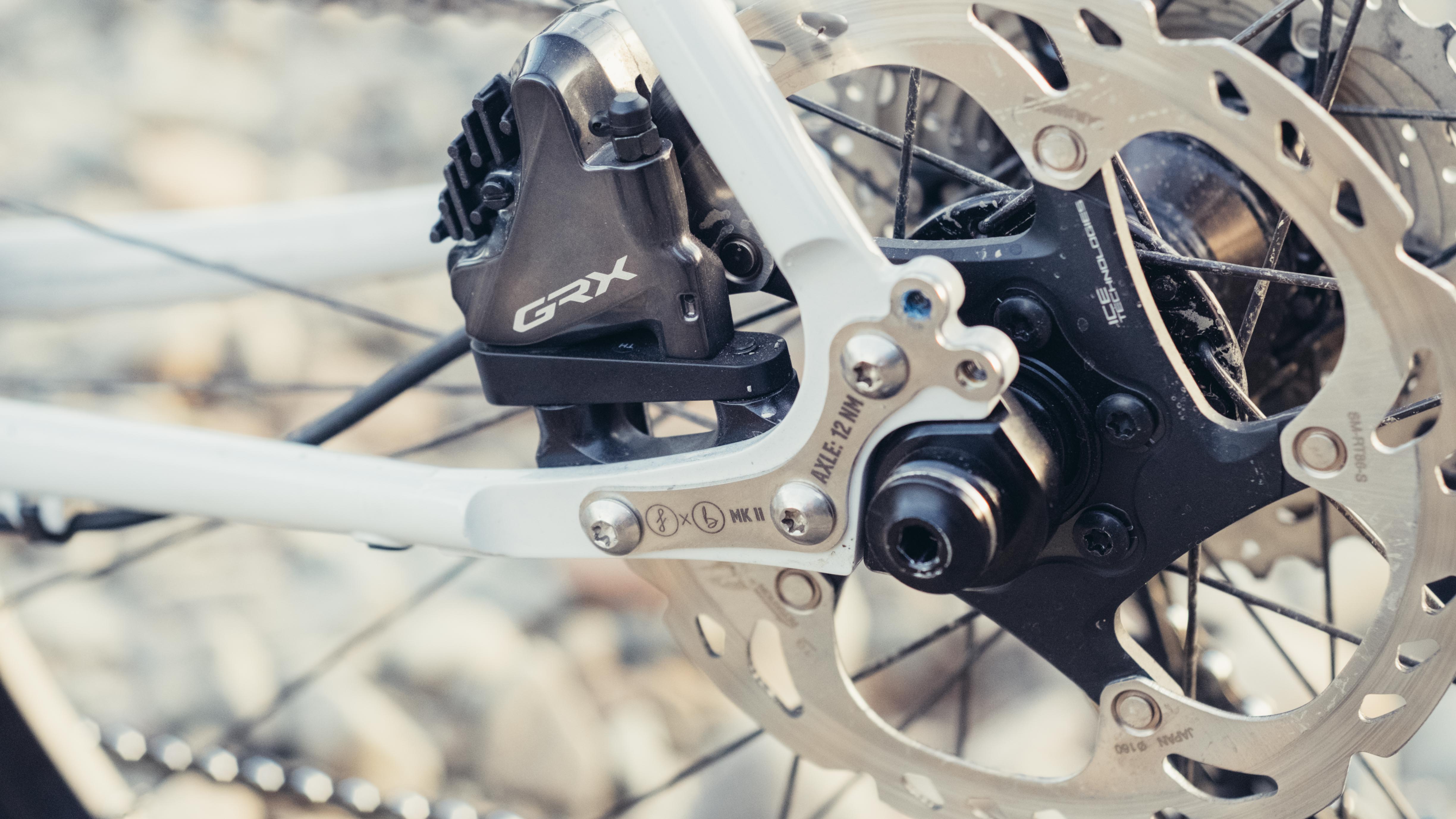
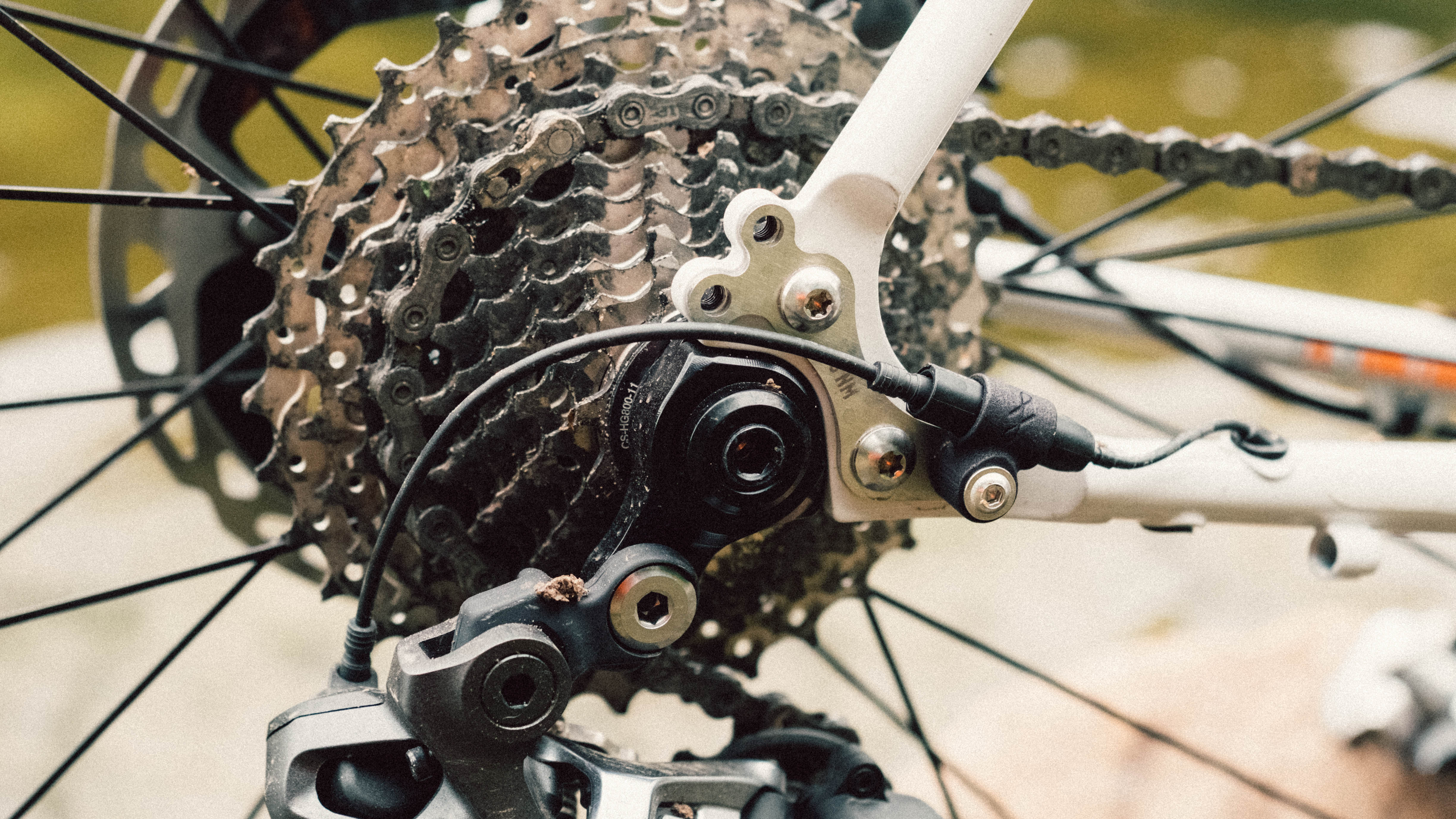
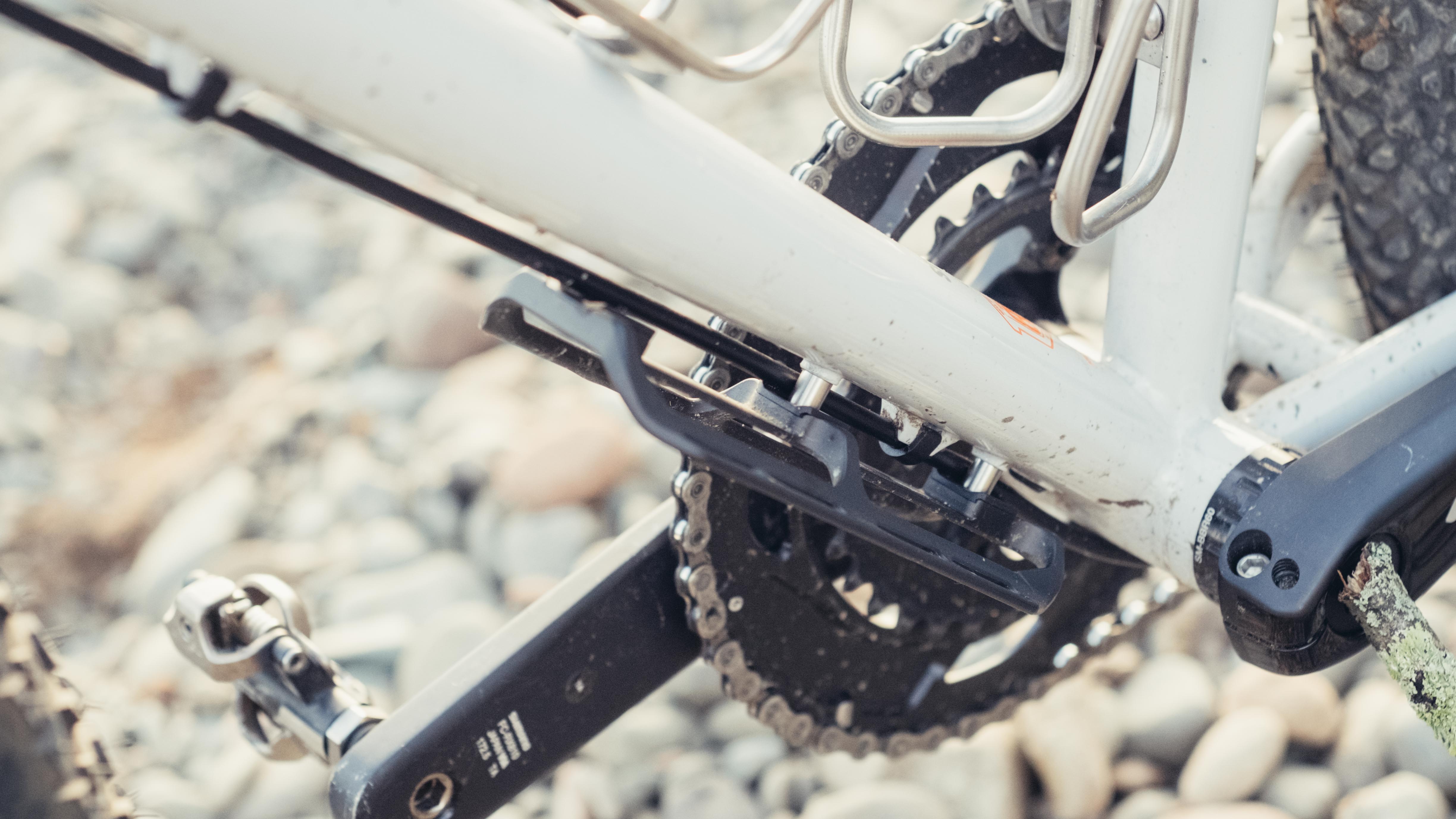
Three-bottle cages are a must for any bike with bikepacking ambitions. But opting for triple bosses rather than doubles on the larger sizes so taller riders can opt to put their bottles in easy reach, is an easy detail to point to that shows the thought that has gone into this frame. I’d have liked to see the downtube bosses be a set of three to accommodate a cargo cage, but for carrying non-standard items you can use straps around the downtube to spread the load more evenly. There’s also modular cable routing so you can run more or less any system you like, along with built dynamo routing. There are no top tube bosses, but I’ve never been one for a snack pouch anyway. Clip-on-ones work fine if this is your chosen approach, and you have to draw the line somewhere I suppose; each additional boss is extra work with the brazing torch, and adds cost that may well not benefit that many customers. And then there are the dropouts...
Dropouts usually are dull affairs, but in this case, they are custom-machined units made in conjunction with Bentley Components, a one-man machining wizard based in Yorkshire. As much as anything they’re a lovely piece of machining, but they also serve to provide individually replaceable units for the thru-axle mounts. The non-drive side also includes the flat mount for the disc brakes, and either side is also installed with a large custom washer that not only dissipates the load from the mounting screws but also protects the paint at the mudguard and pannier rack mounting eyelets. This means any issues with the thru-axle threads, or the threads for the calliper mounts, don't spell the end for your frameset.
Finally, a note on geometry, before we dive into the different setups. The Secan is very road-like, as far as gravel bikes go. In the below image using bikeinsights.com, you can see the brand's road bike, the Strael, in black, and the Secan in white. Also included is a table showing the numerical differences between the two, in this case from geometrygeeks.com.
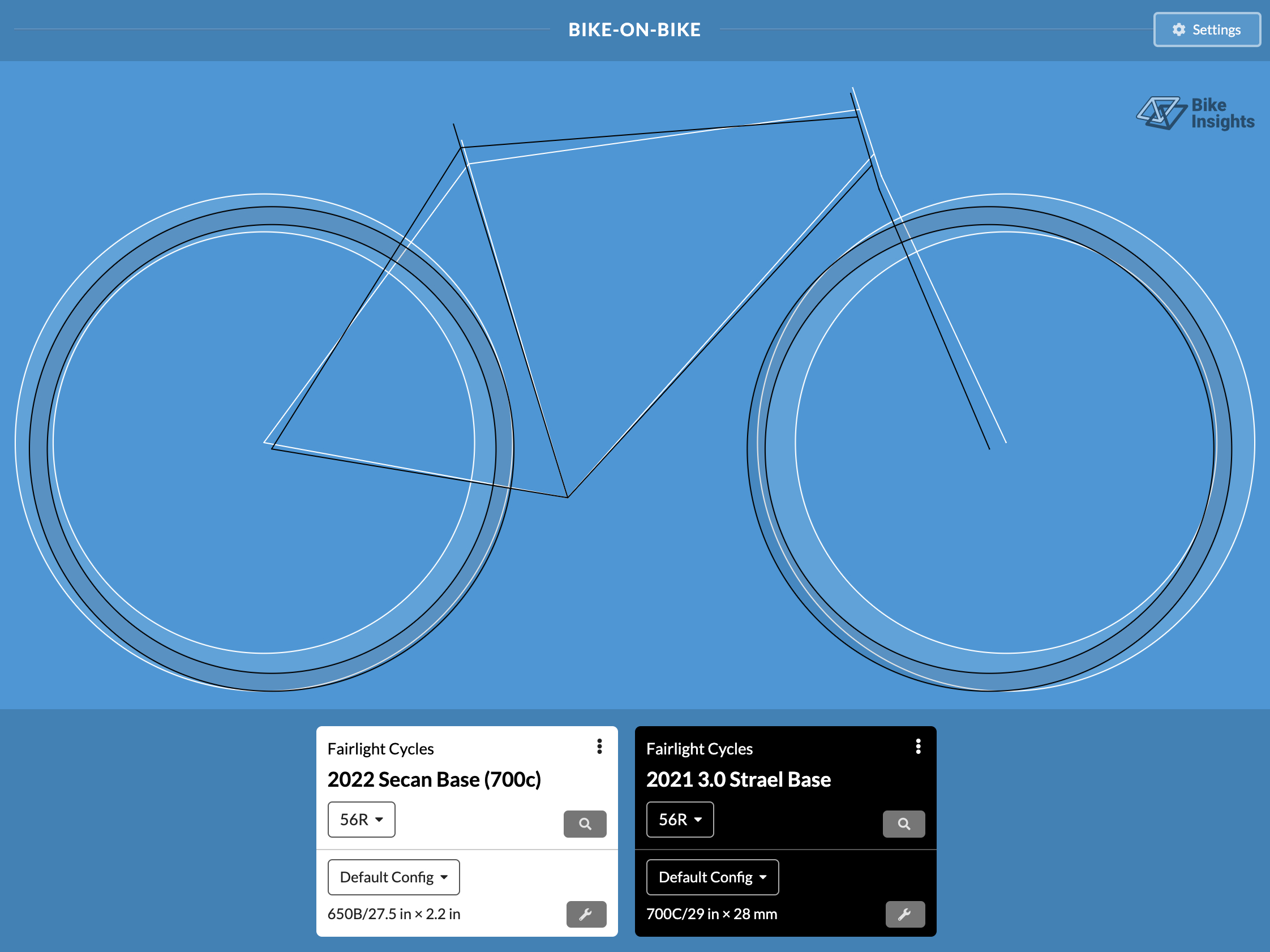
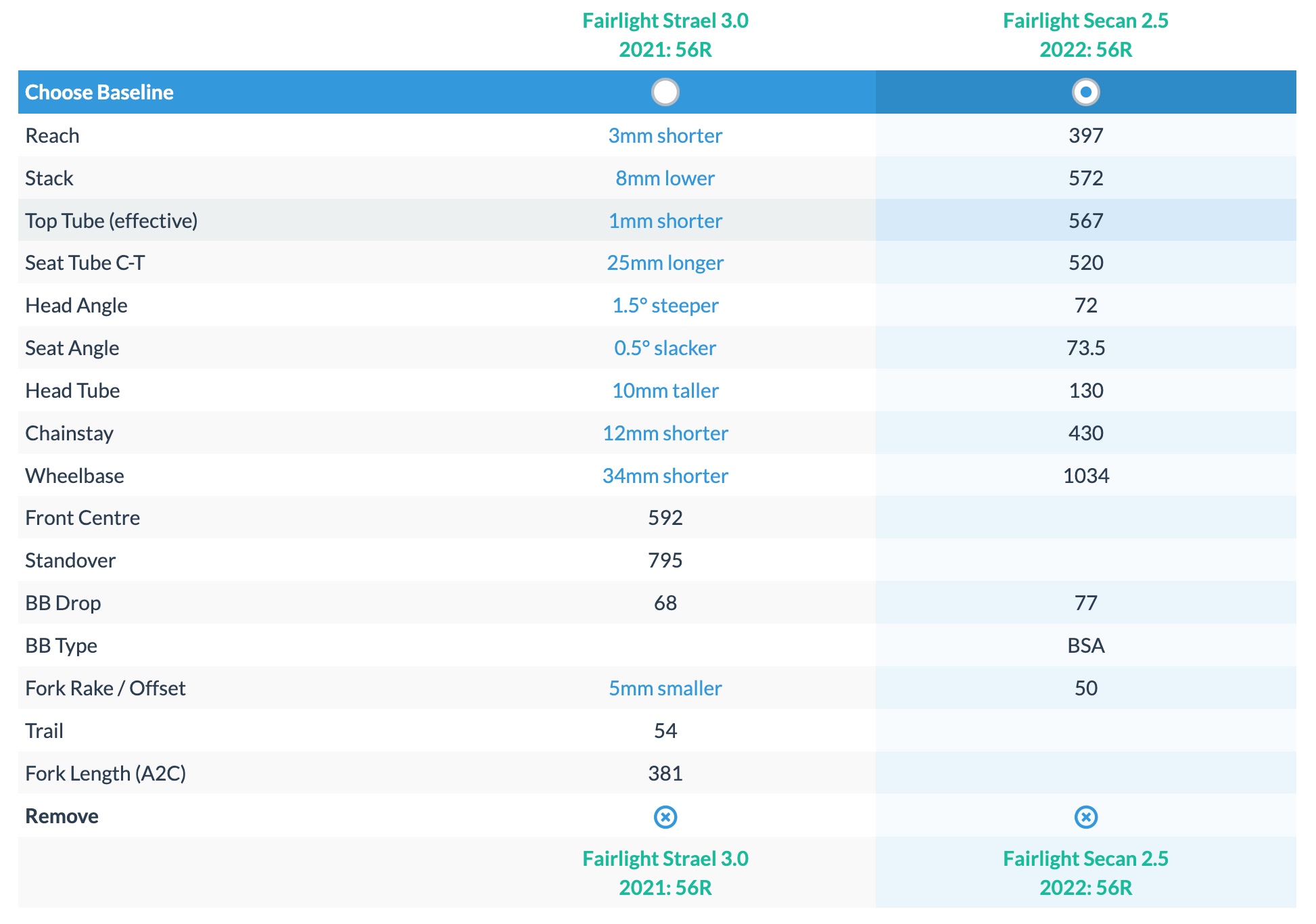
As we can see, the biggest difference is in the chainstays and the head angle. A combination of 12mm longer at the back end, and a 1.5-degree steeper front result in a longer wheelbase to the tune of 34mm. For reference, the below image is the Strael road bike overlaid with the 3T Extrema Italia, which is by no means that radical by gravel geometry. Below that is the Strael compared to the YT Szepter, which is an extreme example as gravel geometry goes. If this is all a bit much then just take my word for it; the Secan is very much at the all-road end of the geometry spectrum, or what we can think of as the best gravel race bikes.
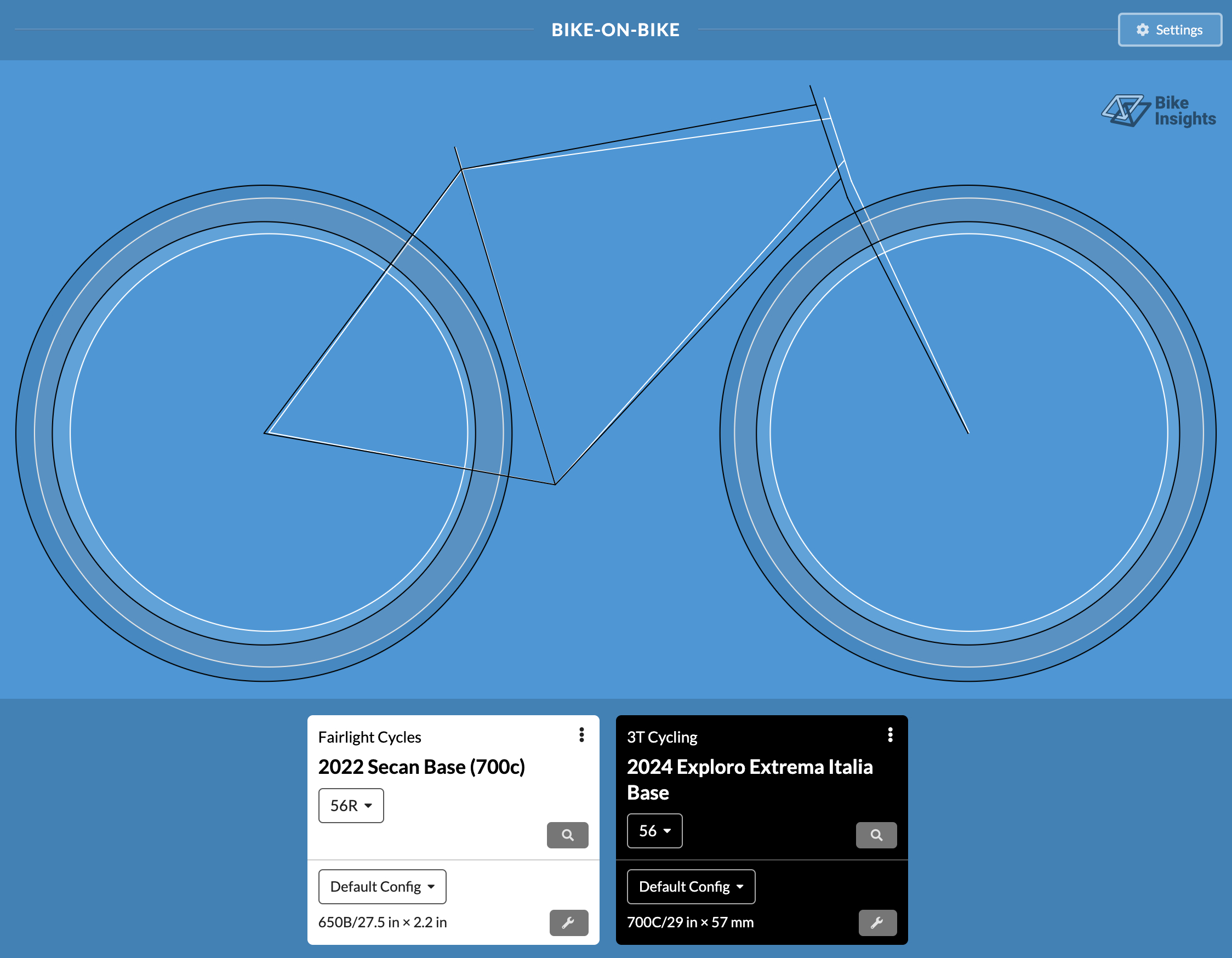
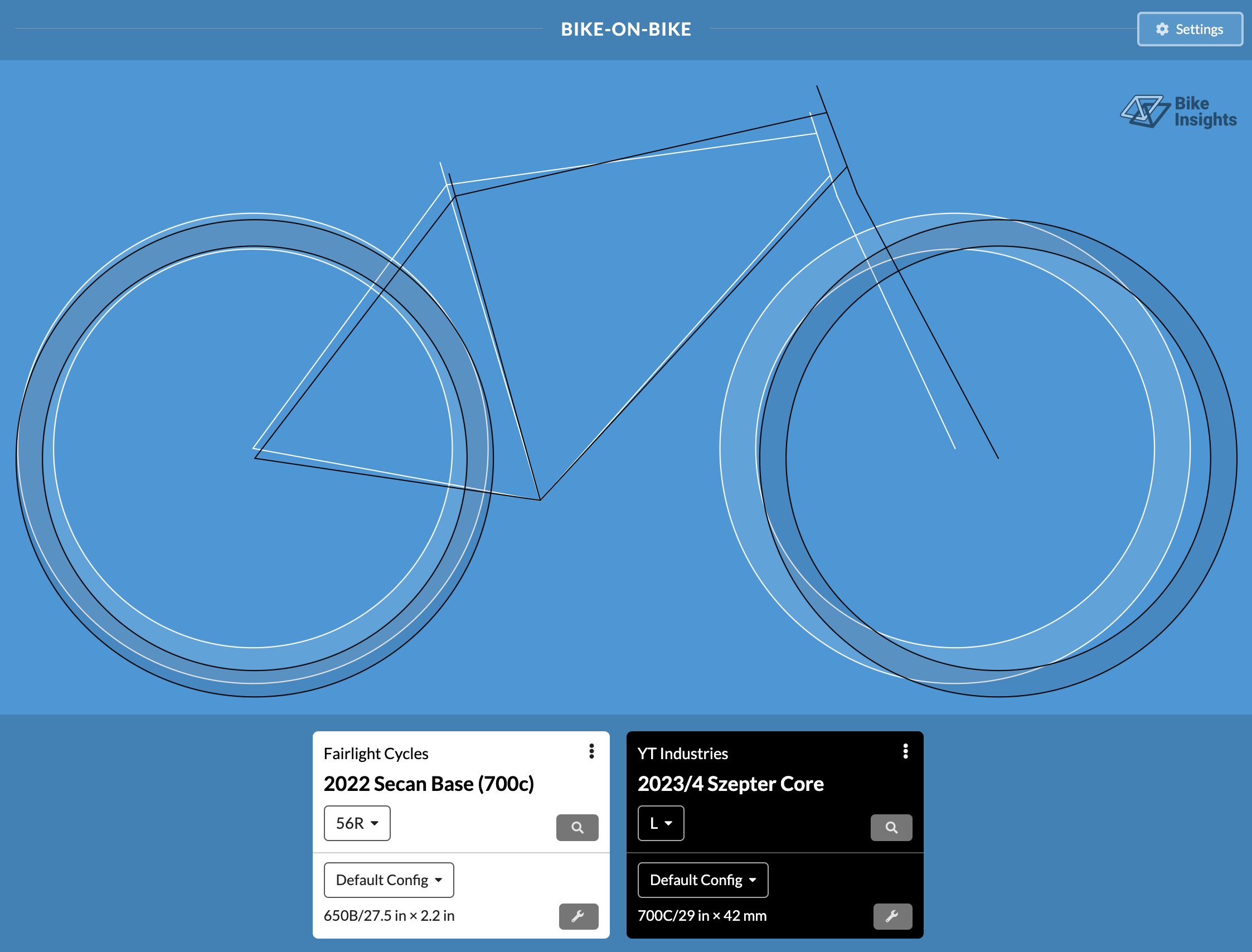
Performance
Here’s where I’m going to break the bike down into three distinct guises, each with its own performance notes. At one end of the spectrum, we have what can colloquially be deemed the ‘monster cross’ setup, with 650b x 2” ish tyres, no mudguards, and the stock FSA Adventure bars. Secondly, there’s what probably constitutes a generalist setup: 700c wheels with something around 40mm gravel tyres and the stock gravel bars - A simple swap of wheels and tyres from a monstercross build. Finally, there’s an allroad setup, with slick, or semi-slick tyres, full-length mudguards and narrower road bars.
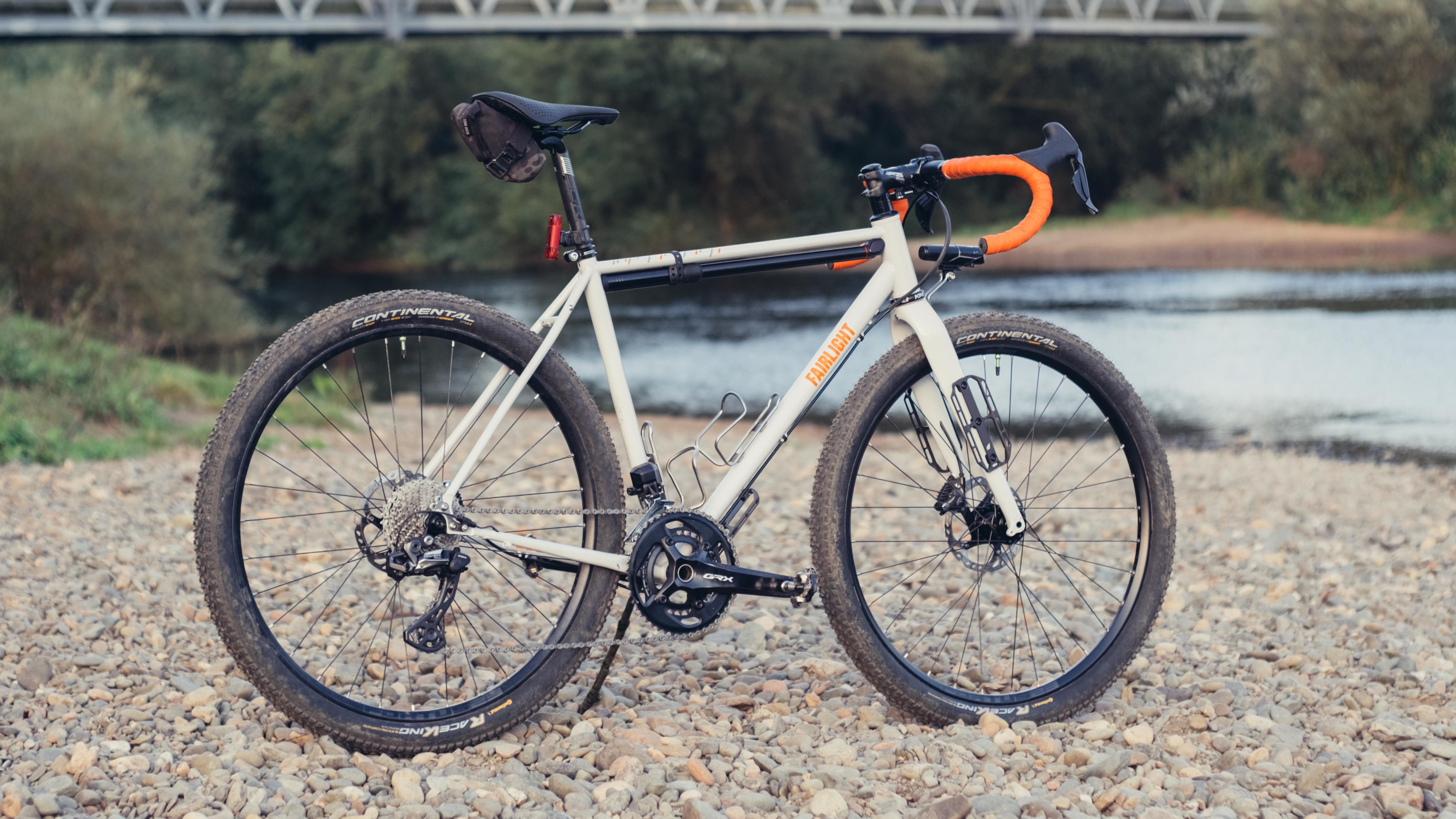
The monstercross setup
This was what I opted for from the get-go, speccing the test bike with 650b Hope Fortus wheels and Continental Race King tyres in 2.2” width. At the time I was living on the edge of the Lake District, and had some big gravel to play with; essentially MTB trails.
The setup was certainly fun, though to my mind there’s always a slightly odd juxtaposition in riding a bike with what is essentially road bike geometry, but with large, wallowy tyres. It’s the same feeling I had aboard the 3T Extrema Italia recently, though that has geometry that’s more attuned to tackling rough stuff. If you are genuinely spending the vast majority of your time on really rather bumpy trails then this setup is perfectly adequate. But when things progress into steep terrain (basically when you really should have an MTB), the tyres begin to write cheques that the geometry can’t quite cash.
Where I can see this coming into its own is for one-off events like the Atlas Mountain Race or similar. The ability to get into an aero position will pay dividends in terms of average speed, and the big rubber can eat up the rocky terrain. For me though, the number of real-world scenarios where this setup came into its own were few and far between. In the winter the added traction from large tyres is great, but when things get slipper and more techy then, again, the geometry isn’t best suited to this kind of riding. You’ll get through it, but once you get back to a road section you’ll probably want to be on 700x40 or so.
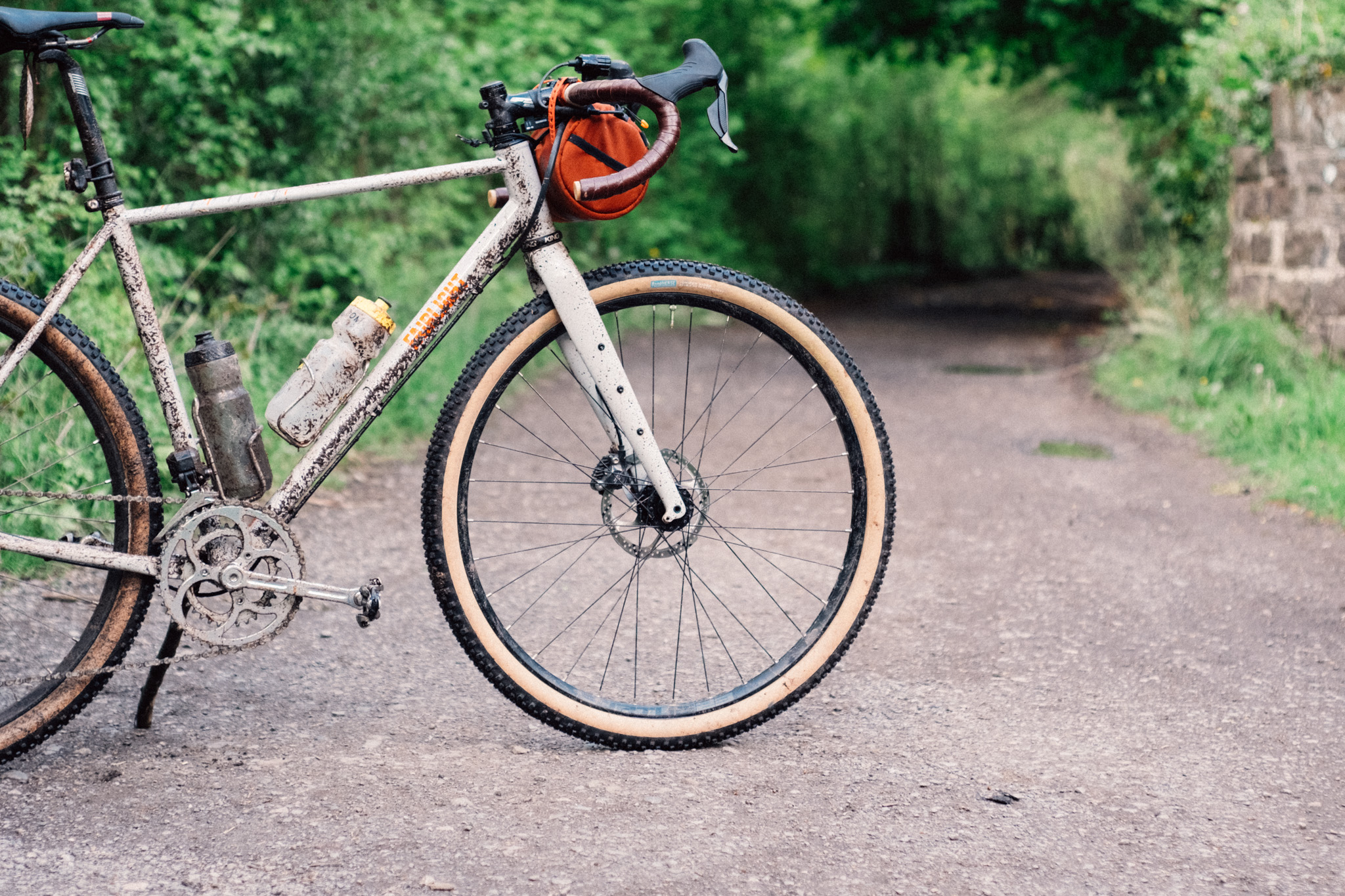
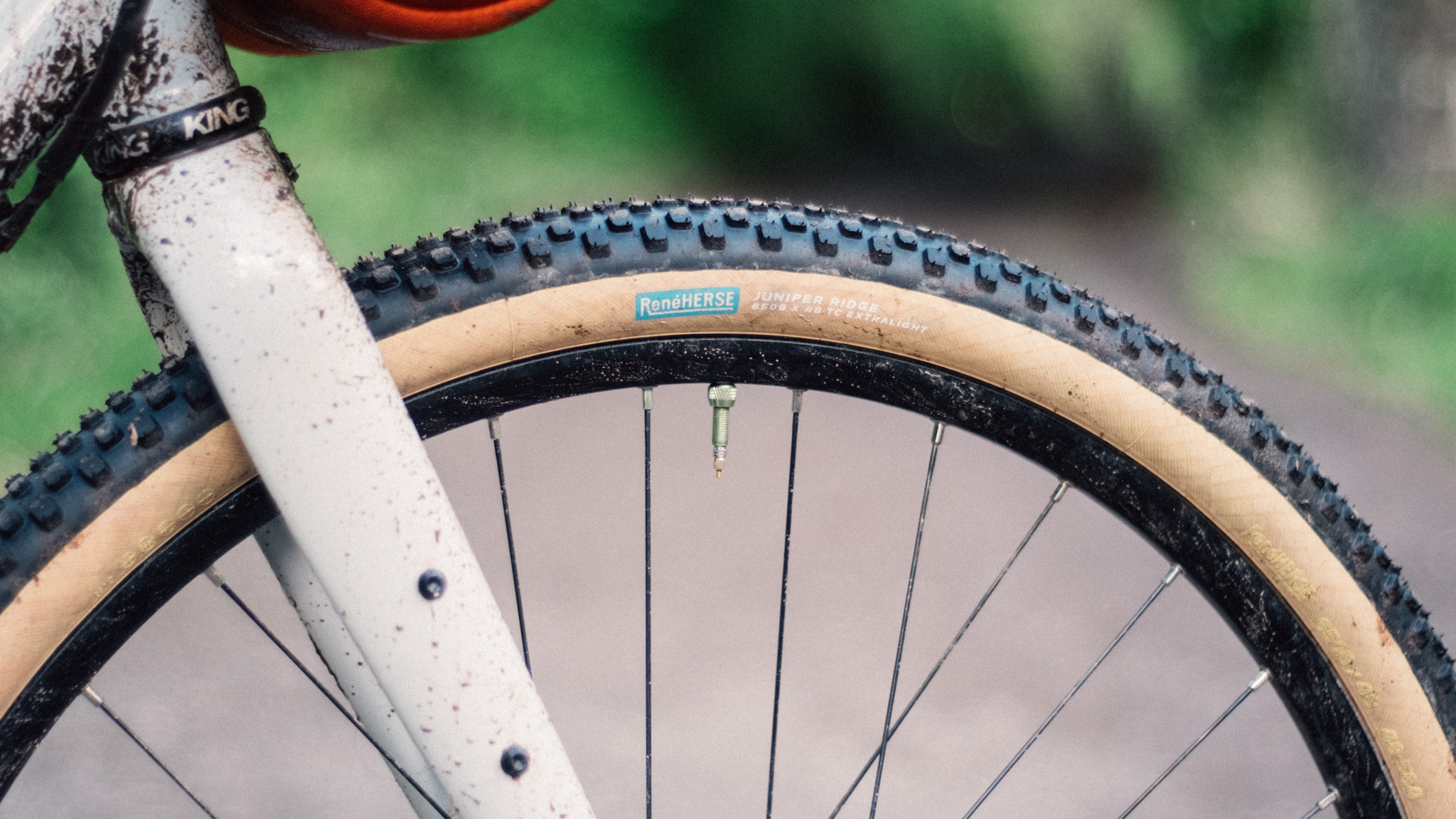
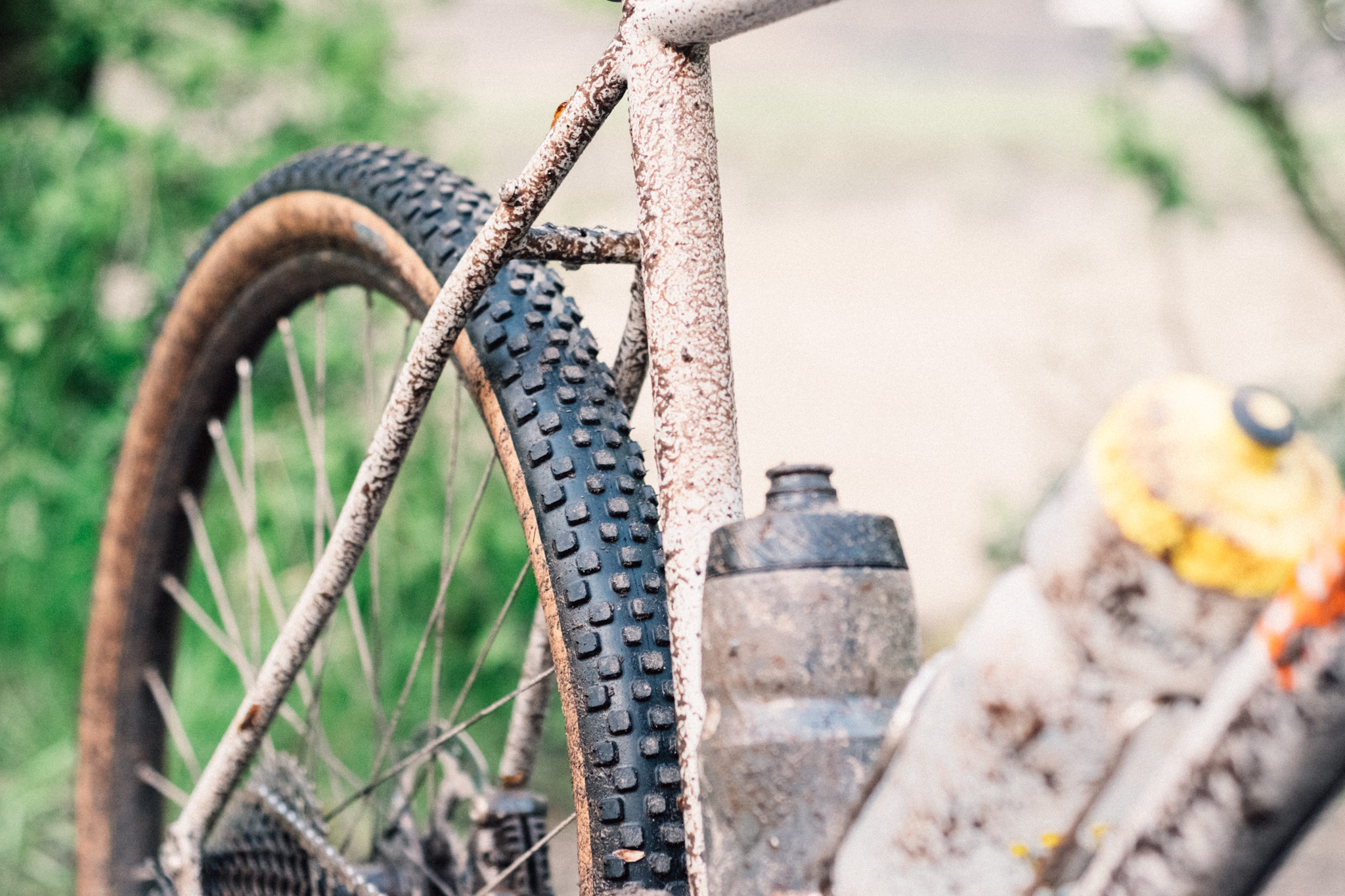
The other qualm I have with this setup from the factory is that 650b is becoming something of an outdated standard. If you want a bike that can roll over anything in a drop bar build then there are others out there that do this better now in 700c. The 3T Extrema Italia, while significantly more expensive (double the price, for reference), handles this big-tyre MTB adjacent stuff better.
My tip, having run this setup for a good few months, is to spec the bike with 700c wheels, and should the need for really big tyres present itself then you can fit a set of decent alloy 650b wheels and tyres. I can’t fault the Hope Fortus rims though; the hubs are excellent and the rims are strong. The only thing to bear in mind is that they are MTB wheels, so come with 6-bolt rotors. If you’re swapping between 700c gravel wheels and these (and many other 650b wheels for that matter) you’ll either need adapters or just an entirely new set of centerlock rotors.
If you are dead-set on running 650b then the difference in tyre weight and casing can make to the ride feel is greater than it is with smaller-sized tyres. After running the stock Continental RaceKing tyres I swapped them out for a set of Rene Herse Juniper Ridge tyres (650b x 48 knobblies) with the superlight casing. Sure, they never really sealed, but the additional suppleness and reduced weight made the bike feel much more lively. If I was running 650b on a long-term basis this is what I’d fit.
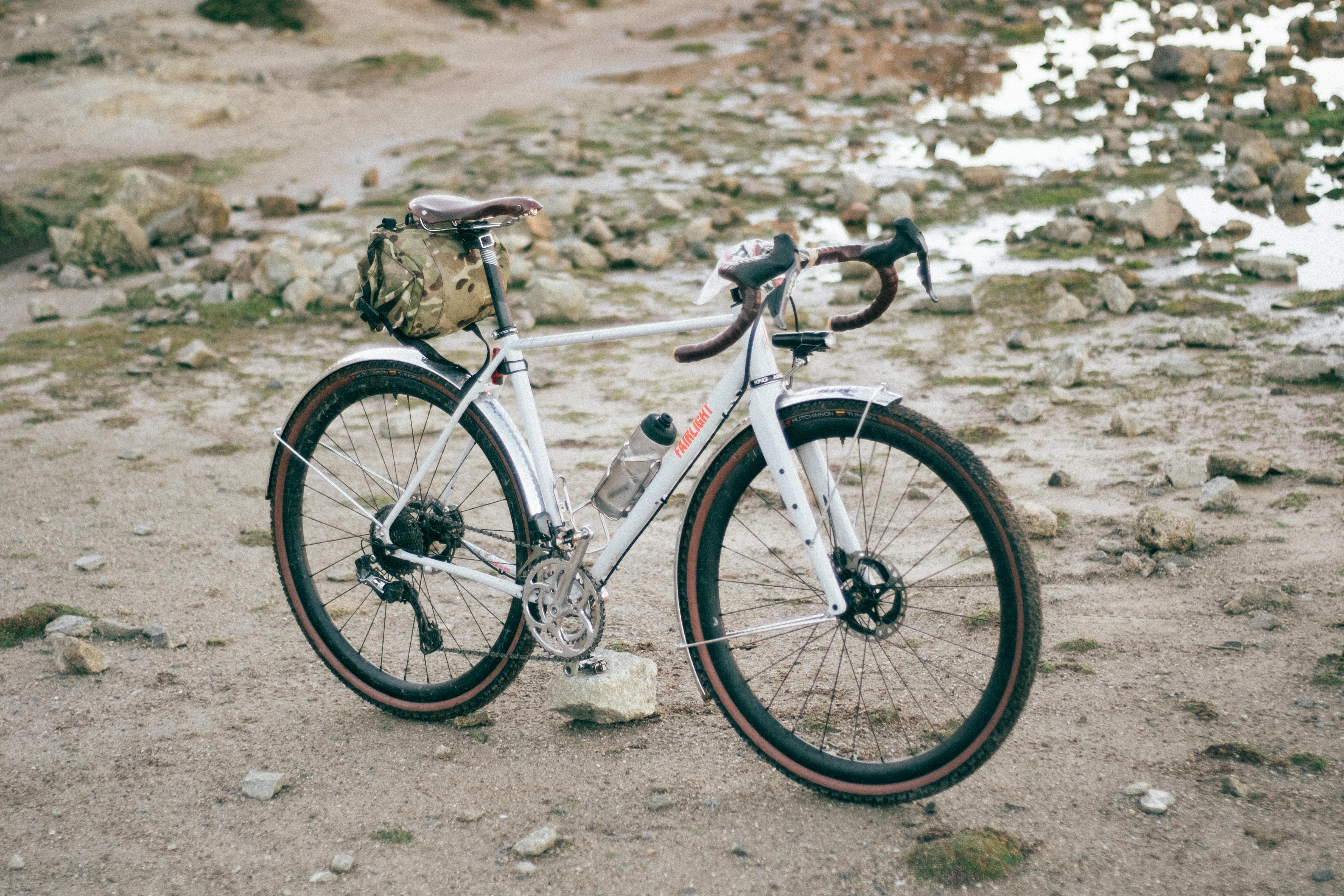
General gravel
Swapping to 700c wheels immediately made the Secan feel more self-assured. Again, it’s not to say it’s bad in any respect with 2.2” MTB tyres, but the geometry of the bike felt better suited to the faster, more agile feeling that skinnier rubber and carbon wheels offer. While the additional squish of massive tyres certainly helps, you do get slightly better rollover with 700c to offset this. In general, there wasn’t anything I felt I couldn’t ride with a 700c x 42 that I could ride with a 650b x 2.2”.
With this setup, the geometry of the bike starts to sing in harmony with the component choices. The handling is wonderful. It’s fast, you’re over the front of the bike as you would be with a road bike so you can lean hard on the front tyre (tyre choice as ever does make a huge difference). On road sections you don’t feel like you’re wasting energy by being sat too upright; things generally feel more efficient. In this guise, too, the 2x GRX feels like the appropriate choice. I’m still a staunch 2x believer unless I’ve got the option of running something extreme like GX Eagle. It’s more road-like in the feel, though has excellent range.
I did dabble with a wider range double in the form of a Rene Herse square taper crankset, and while I enjoyed the gear ratios it offered, the cranks did occasionally work a little loose over time. This is, however, something that I find can happen with square taper systems and isn't necessarily a failing of these ones specifically, and in Rene Herse's defense it would cover them under warranty if they continue to loosen after proper installation. It also mentioned that it had experienced some issues with SKF bottom bracket spindles being slightly out-of-square in the past, which may also be at fault rather than the cranks. What I can't fault though is the shifting (happy a match for GRX chainrings), and the aesthetics (easily one of the prettiest cranksets out there).
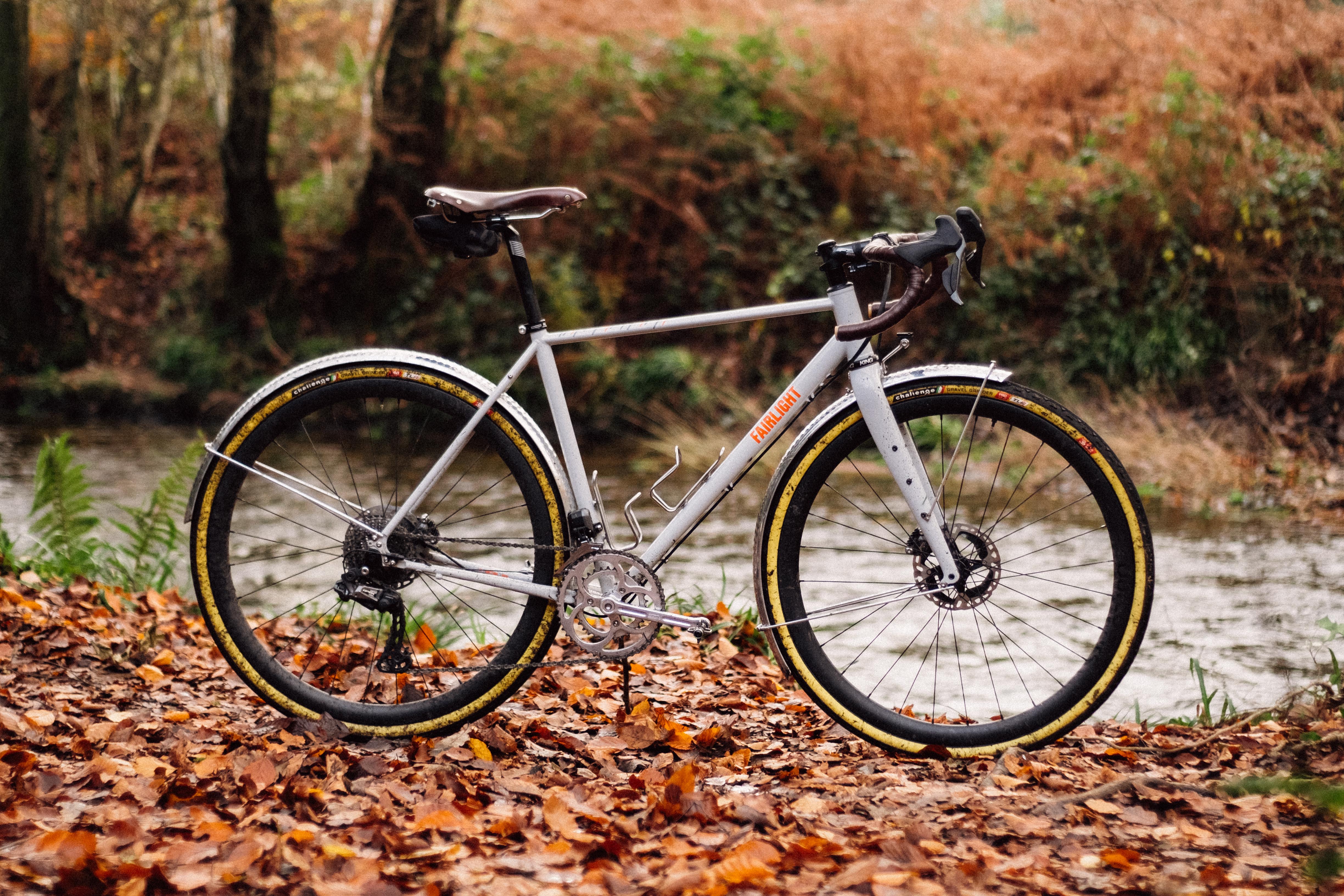
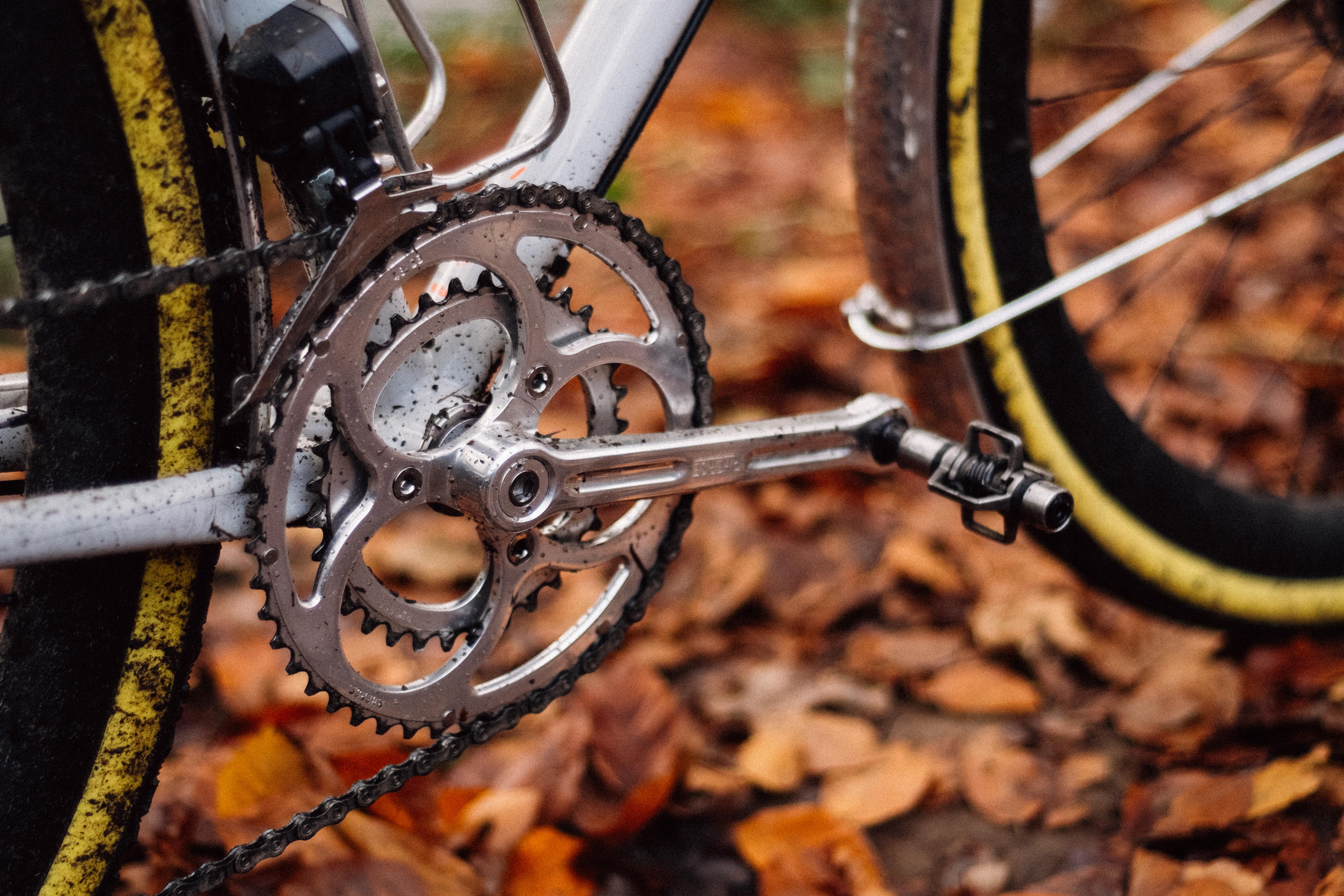
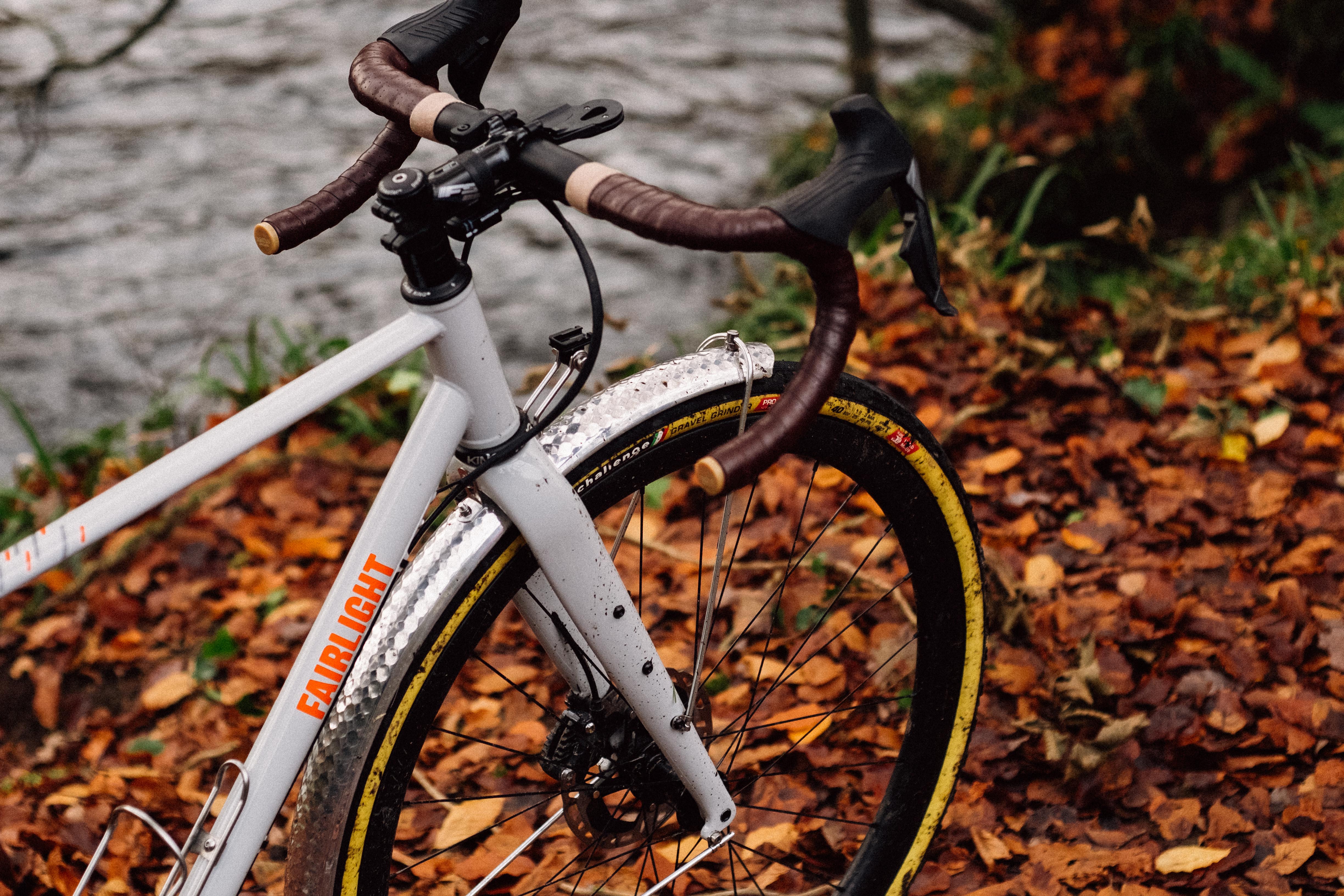
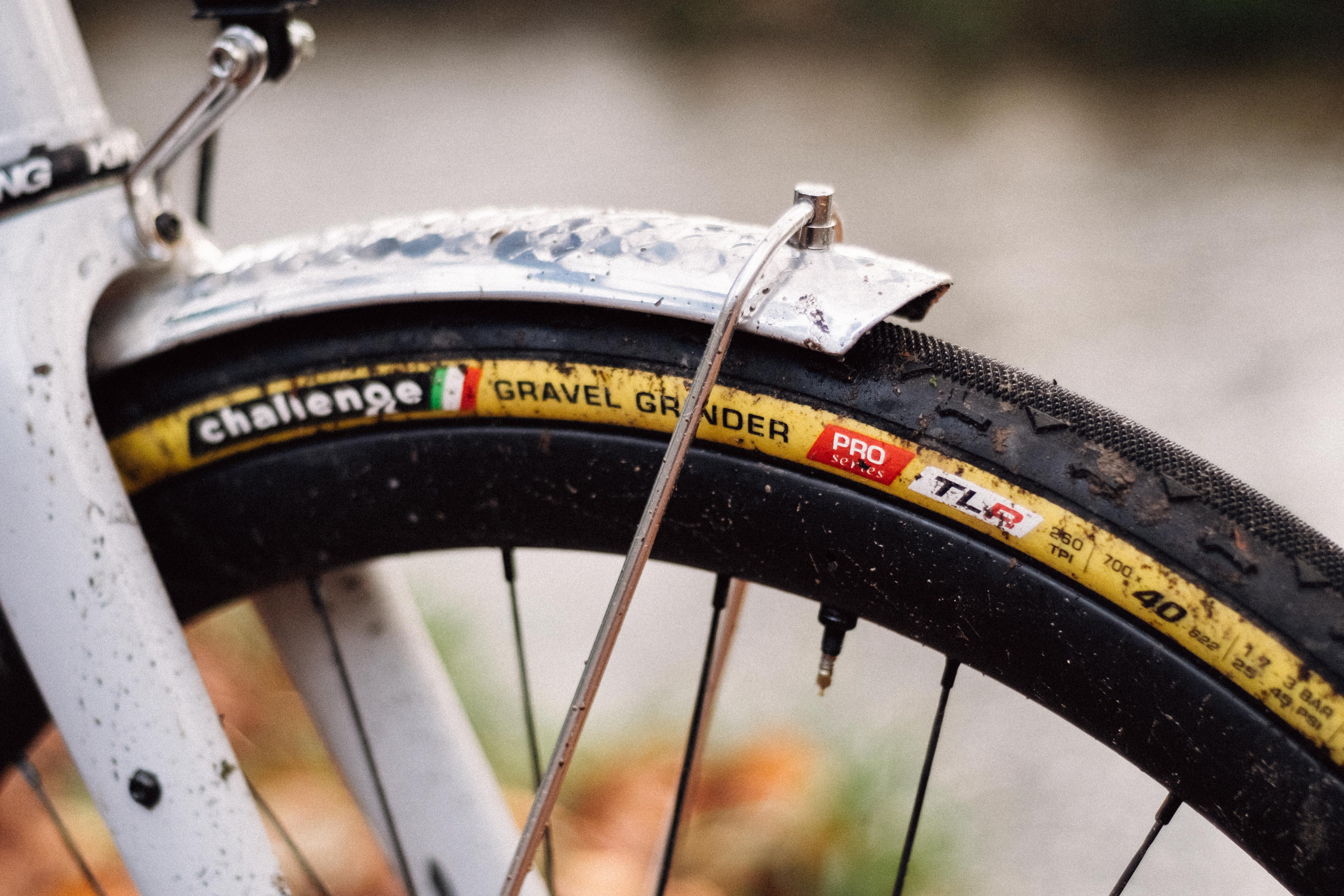
At this point, you can begin to fit mudguards, as you’re not maxing out the capacity of the frame and forks to quite such a degree. Generally speaking, I preferred to just leave a set of Velo Orange full-length metal fenders on year-round, something which you can do if you commit to a single wheel size. You take a bit of a hit on tyre width, but staying clean is worth the price. This is also the setup I ran while bikepacking, something I rarely do because I enjoy the comfort of a warm bed and have a tendency to overdo it and ruin my experience. I did run a Tailfin for one trip but found the weight was too rear-heavy, and the elasticity of the frame created some rather nasty speed wobbles, so if you do load it up with a fixed pannier rack be sure to make the most of the fork mounts too. It’ll be less aerodynamic, but the handling will be far more kind.
I also think, from a purely aesthetic standpoint, this is where the bike looked its best. Silver fender, a silver crankset (square taper issues aside), a leather saddle, matching leather bar tape, and tanwall tyres was truly a sight to behold.
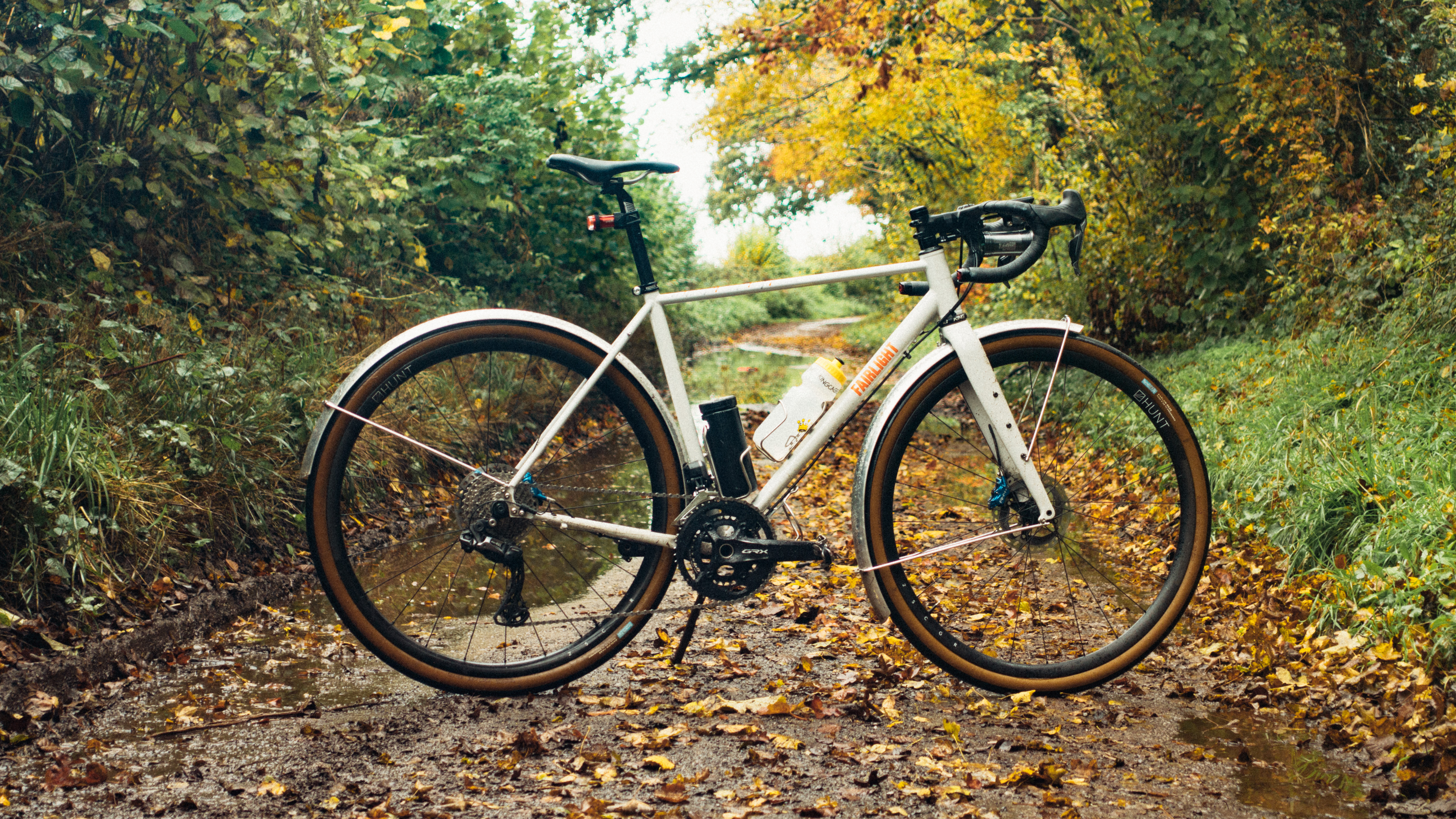
The allroad setup
This is increasingly what I have preferred using the Secan for. Especially as the winter draws in and I am less drawn to ploughing through actual mud and pretending it is gravel, fitting a good set of fast wheels (Hunt 25 CGR), full guards, and a set of fat slicks (Rene Herse Barlow Pass - 700c x 38, with the endurance casing) makes riding the mulchy, gloomy B-roads that I love much more pleasant than on 28c tyres.
The real killer tweak for this setup, and one that I wished I’d opted for from the start, was fitting a set of narrower bars (primarily after a bike fit). When initially speccing the Secan I opted for wider-than-stock 44cm bars, which to be honest felt a little cumbersome for general riding. Swapping to a set of 38cm bars (Pro Vibe ones, because why not) was genuinely transformative, not least because it mirrored my road position identically. Having an aero touch looked cool for sure, but I’m sure any speed benefits were more down to a narrower frontal position.
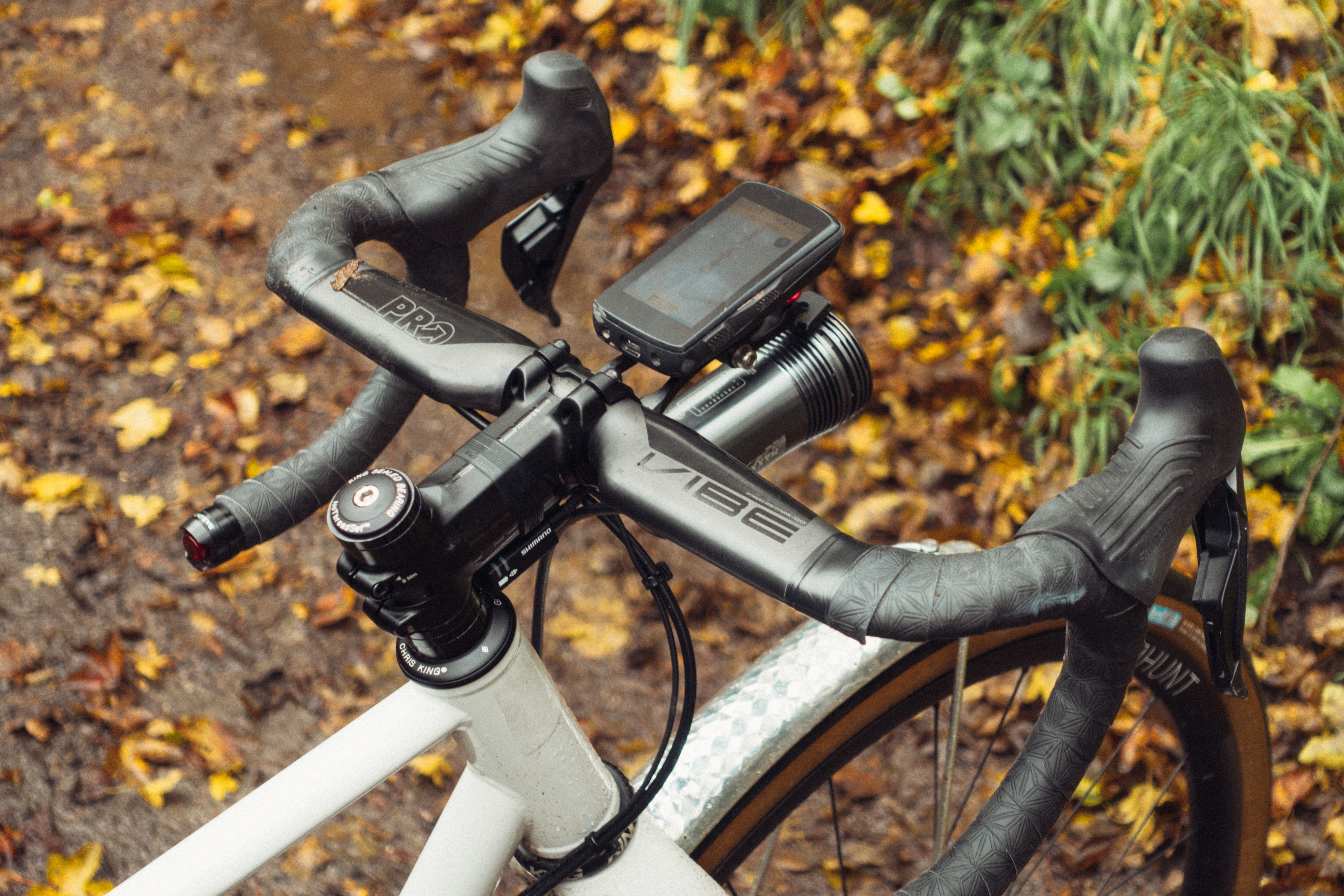
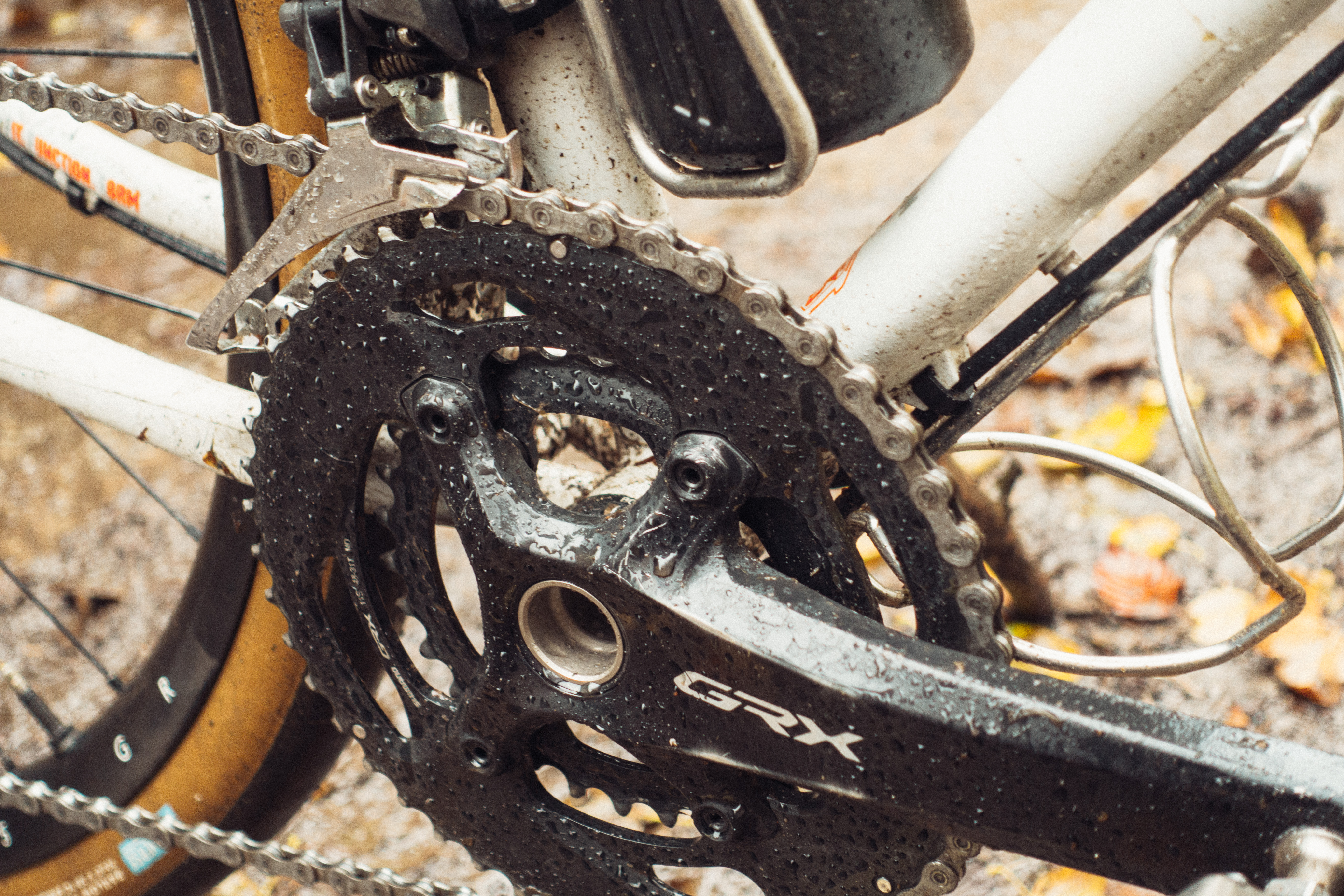
One thing I get asked a lot, especially when I solicit questions on Instagram to aid in the creation of a long-term review, is whether this really can be used as a road bike. In the summer, on a lovely day with smooth tarmac, there’s no question that I’d rather be on a dedicated road bike, but that doesn’t mean the Secan isn’t capable. I am an extremely fortunate young man in that I have access to many lovely bikes, but the ability of the Secan to absolutely sing on the road, particularly on broken tarmac is what really endears it to me. It is a bike that can do almost everything with aplomb.
If I was setting this bike up afresh and anew I’d definitely make use of the dynamo option, but given how often I swap wheels this wasn’t feasible.
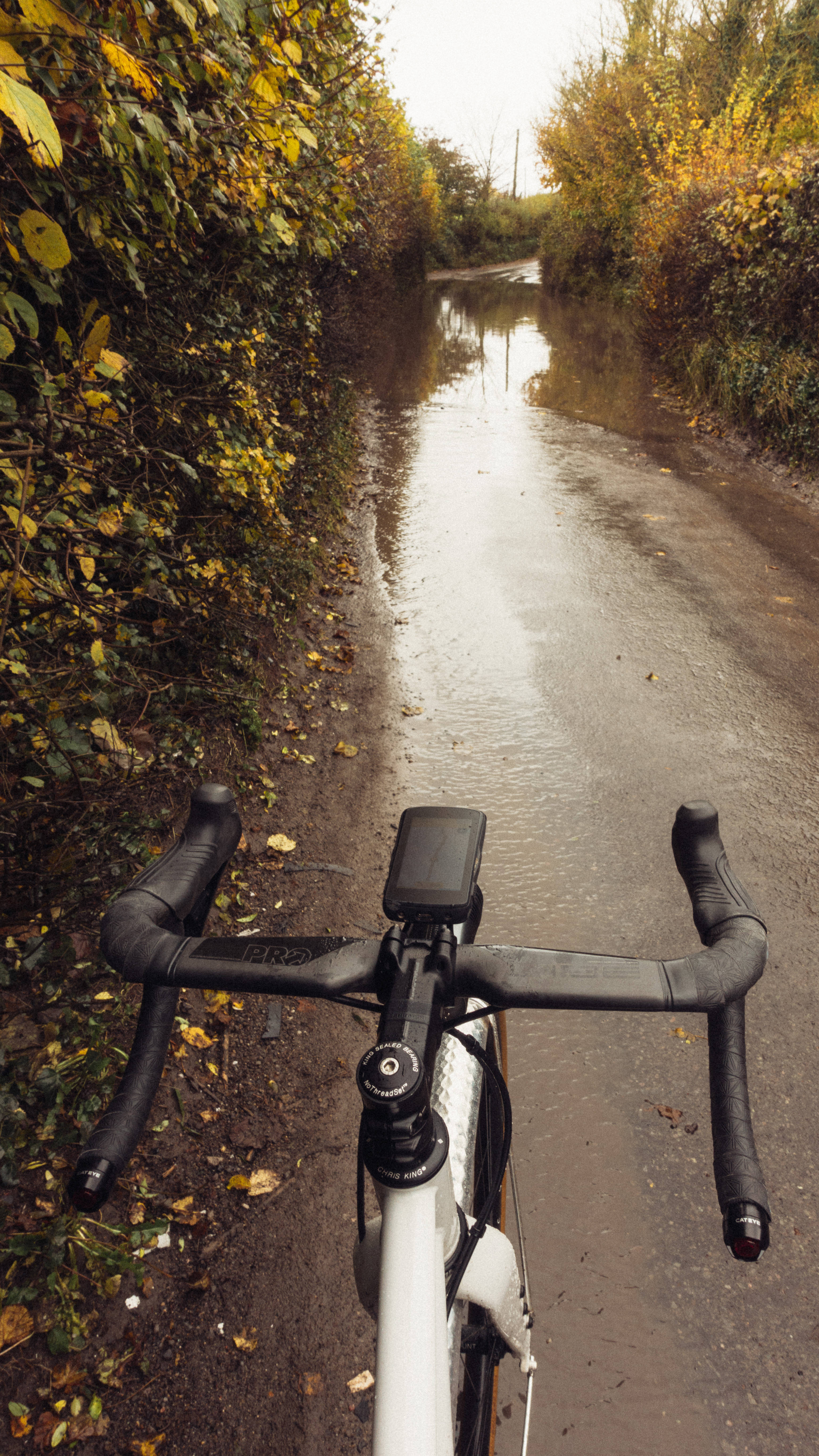
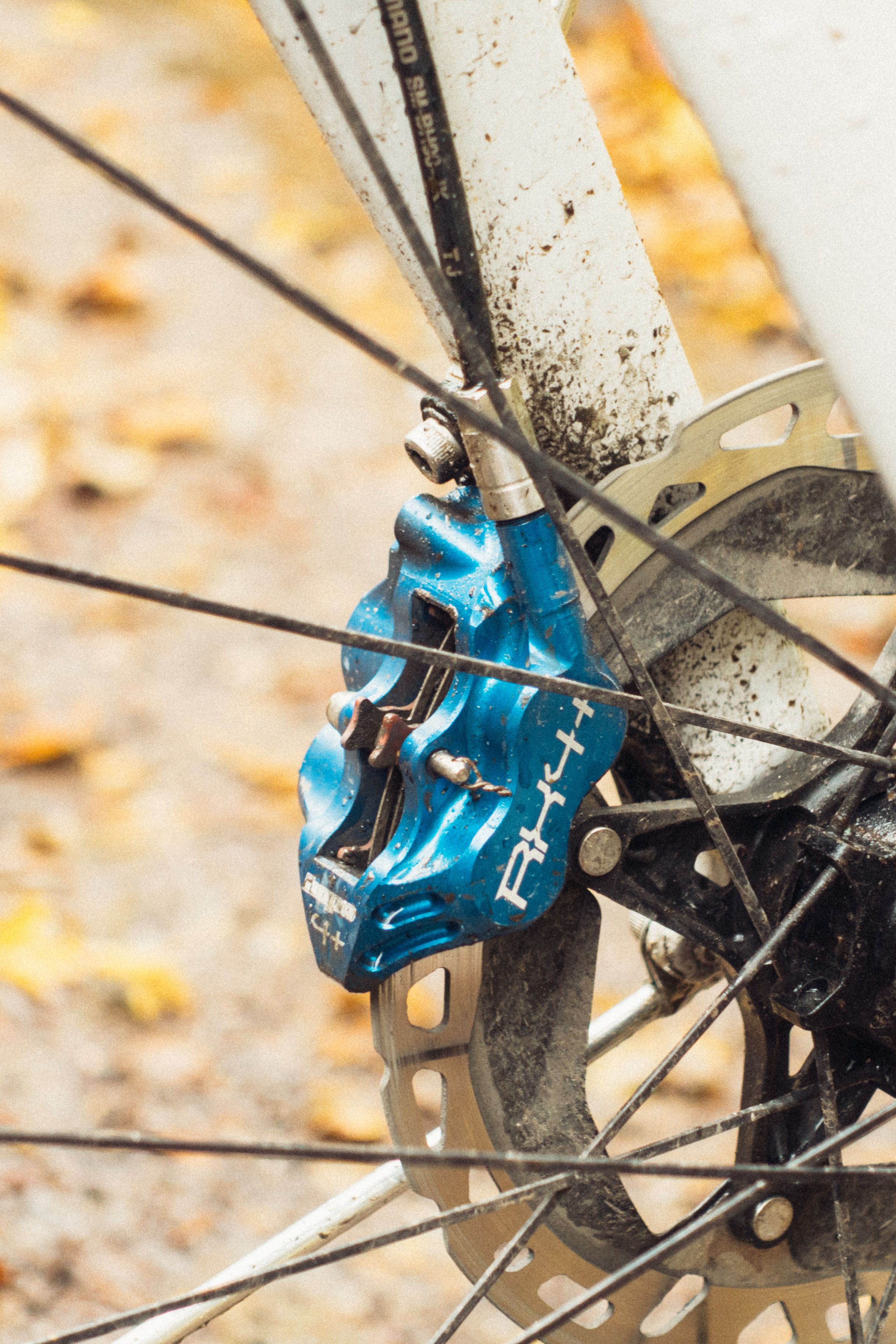
A cyclocross aside
One setup that I would like to have tried (and maybe will in the future) is to set the Secan up as a cyclocross bike. There’s a growing disparity now between dedicated cyclocross bikes from the likes of Ridley, Stevens et al., and gravel bikes. However, the Secan’s road-like geometry got me thinking about just how well it could handle the specific demands of a cross-race.
Sadly a lingering back issue means I can’t hack the high torque, low cadence riding that cyclocross demands, but that doesn’t mean I can’t make some educated guesses… back to the geometry charts we go for just a short second. What we have below is the Secan overlaid over the 2022 Specialized Crux. While Specialized markets the Crux as a gravel bike, it is still used by some of the world’s best ‘cross riders at the pointy end of the most competitive races. Just looking at the overlay you can see that the geometry is more or less identical, save for a shorter seat tube, so while I haven’t been able to test it yet, I’m absolutely certain that if you fitted a set of Challenge Grifos and lined up for a muddy hour in a park on any given Sunday you’d be hard pushed to blame the bike if you don’t get the result you want.
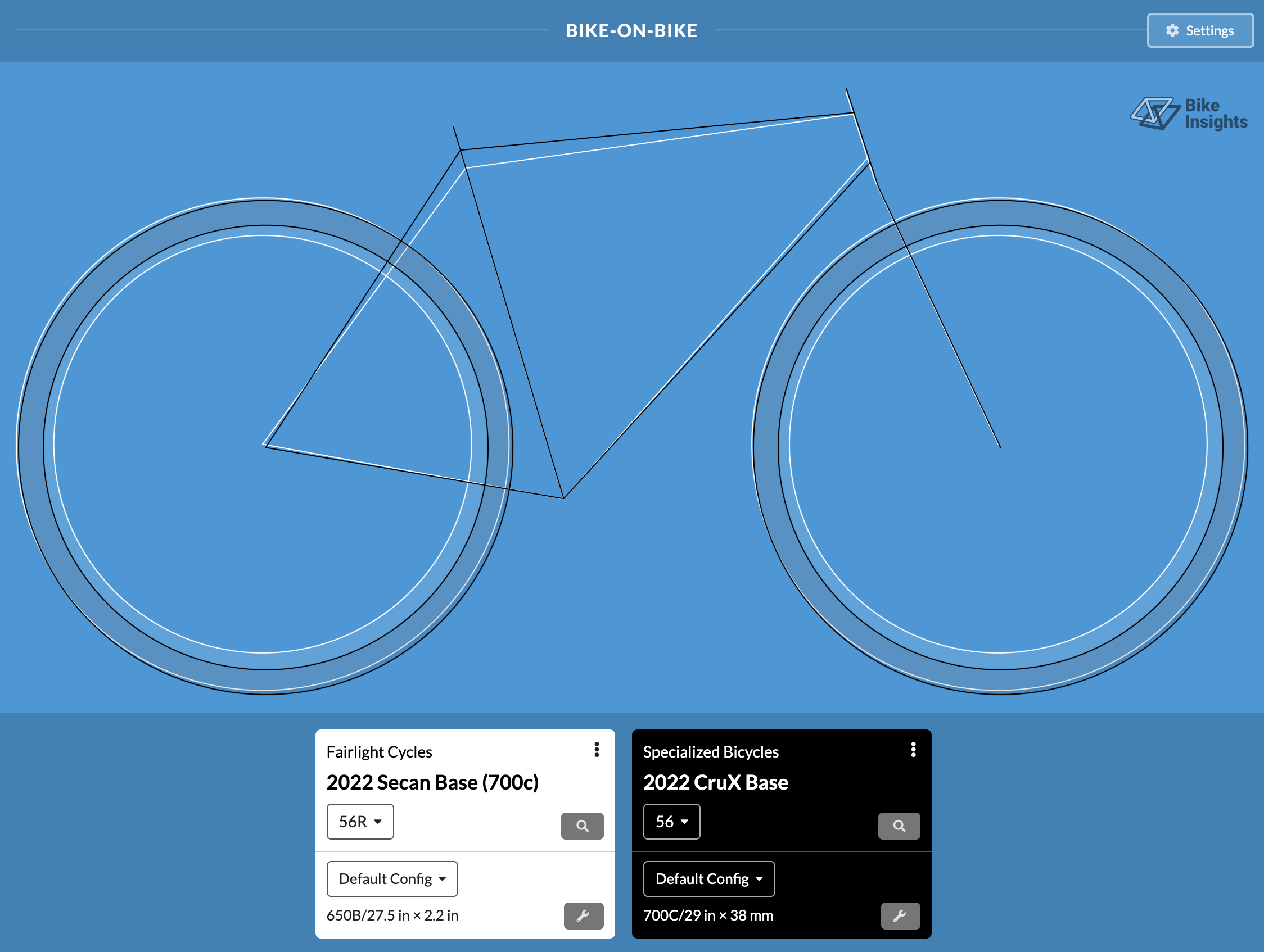
What is it like to live with?
Here’s the other giant feather in the Secan’s cap: Everything is easy. The hoses are external, though the Di2 wiring isn’t. If you’re running cables they can be fully housed to prevent corrosion, and when they do need swapping you don’t need to mess around feeding things through the frame. The headset bearings are standard, the seatpost clamp is external so if you round a bolt or have another kind of disaster then you’re not sacrificing the frame. The seatpost, too, is round. Had I not been running Di2 I’d have probably experimented with swapping in a suspension seatpost like the Redshift ShockStop.
It’s something I also praised the Strael for, but the Secan perhaps even more so allows me to scratch that upgrade itch. I love messing around with setups and because everything is normal, I can fly free and unencumbered and just throw parts at it and see what works. In short, it’s a dream to live with.
Value
Upwards of £4,000 (in the initial guise) is a lot to spend on a bike that’s for sure, but when set against the cost of top-end racing gravel bikes it’s not actually that much. Furthermore, when considered as a bike that can realistically be an Audax bike, essentially a road bike, an ultra racer, light tourer, gravel bike, cyclocross bike and allow you to tackle terrain hitherto the preserve of cross country mountain bikes it represents pretty astounding value.
Having tested a great many bikes since initially penning my review for the Secan I speculatively suggested that there must be other bikes that are similarly versatile out there. Now, though, I’m less sure. I think the only bike that comes close is the Vitus Venon Evo, which at once is a brilliant road bike and a cracking racy gravel bike. It’s in the same price range, but the tyre clearance is more limited so can’t handle the really rough stuff quite so well. Likewise, the new 3T Extrema Italia can house equally wide rubber, and in a 700c format, but it’s double the price and the geometry lends itself less to on-road or racy gravel riding. Basically, I can’t think of a bike that does so many things as well as the Secan.
Verdict
If you’ve made it this far, congratulations… If you’ve skipped to this bit, fair enough. The short story is that I find the Secan to be a sublime bike. It offers unparalleled versatility, and while it can certainly handle the rough stuff in a monster cross setup. I definitely think it shines more when set up either as a fast gravel bike or an allroad rocket ship. If you are in the market for one then I suggest you go for 700c.
It is, to all intents and purposes, perfect. There’s nothing I’d change, other than how I initially specced the bike, to begin with, but that’s a personal preference to a degree and also shows just how flexible the buying process can be. Not many brands offer the level of customisation at the purchase stage. Weight is the only drawback, with the stock build sitting at 9.77k and having ridden lighter gravel bikes I can say it’s not going to be a dealbreaker.
| Attributes | Notes | Rating |
|---|---|---|
| Design and aesthetics | Its beautiful, save for an ugly junction box, which can be easily swapped for a small fee | 10/10 |
| Build | GRX Di2 is hard to beat, and the finishing kit is sensible without being needlessly bling. There are always options, too. | 10/10 |
| Performance | This is the most complete gravel bike I've ridden to date | 10/10 |
| Weight | Swapping the 650b x 2.2" for 700c carbon wheels and fast tyres basically negates any weight penalty | 9/10 |
| Value | If you consider how many hats this bike can wear the value is pretty phenomenal | 10/10 |
| Overall rating | Row 5 - Cell 1 | 98% |

Will joined the Cyclingnews team as a reviews writer in 2022, having previously written for Cyclist, BikeRadar and Advntr. He’s tried his hand at most cycling disciplines, from the standard mix of road, gravel, and mountain bike, to the more unusual like bike polo and tracklocross. He’s made his own bike frames, covered tech news from the biggest races on the planet, and published countless premium galleries thanks to his excellent photographic eye. Also, given he doesn’t ever ride indoors he’s become a real expert on foul-weather riding gear. His collection of bikes is a real smorgasbord, with everything from vintage-style steel tourers through to superlight flat bar hill climb machines.
